We left Fes and headed south to the Tafilalet region, famous for its savory dates and gorgeous scenery. Most spectacular of all are its night skies, which are full of stars because the desert is free of light pollution 👍👍
Atlas Mountains
To get to our destination, we first had to cross the Atlas Mountains, a mountain range in located in northwest Africa stretching around 2,500 kilometers (1,600 miles) through Algeria, Morocco and Tunisia. The Atlas Mountains are not a continuous chain of mountains but a series of ranges separated by wide areas of land, which are called plateaus. The mountain range separates the Mediterranean and Atlantic coastlines from the Sahara Desert. It has several passes that provide routes between the coast and the Sahara desert.
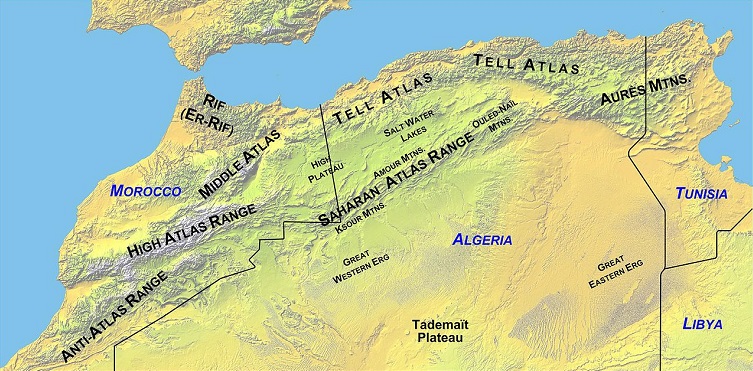
The Atlas Mountains
The range can be divided into four general regions: (1) the Middle Atlas, High Atlas and Anti-Atlas (Morocco), (2) the Saharan Atlas (Algeria), (3) the Tell Atlas (Algeria, Tunisia), and (4) the Aurès Mountains (Algeria, Tunisia).
Our drive from Fes to Erg Chebbi took us through the Middle Atlas, a portion of the Atlas mountain range lying completely in Morocco. It possesses the most abundant vegetation in the Atlas system, with extensive stands of fir and cedar at higher elevations.
Most of the populations around the Atlas are small villages, rather than cities. The most famous and numerous of the Atlas populations is the Berber People, a North African culture which traces its roots back thousands of years.
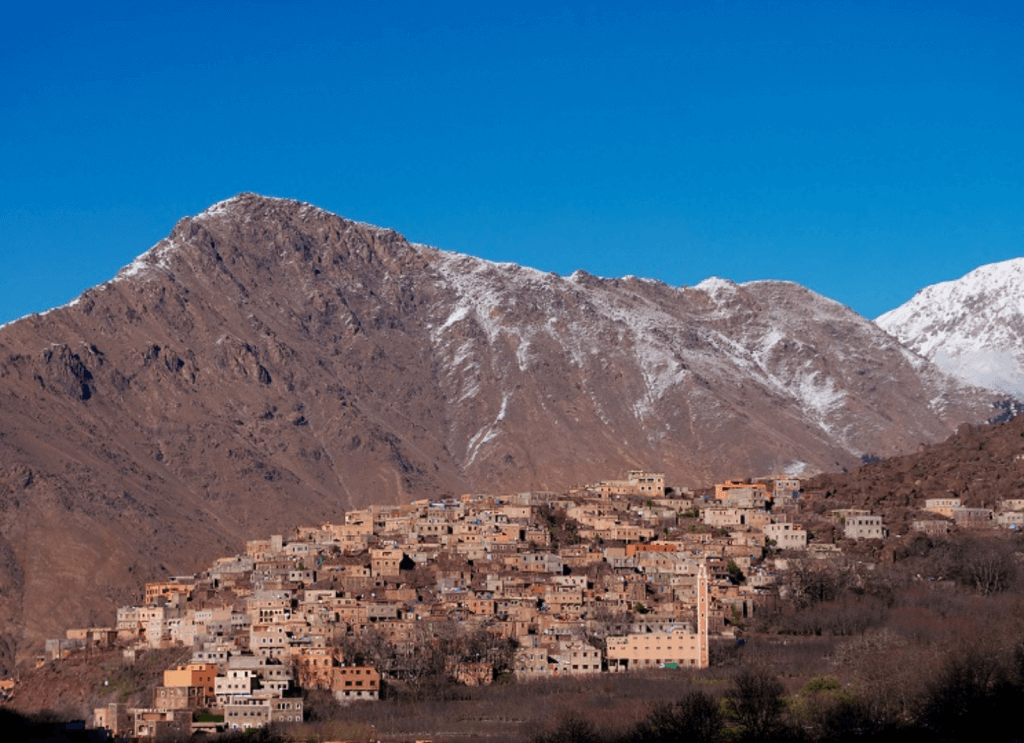
A Berber Village in the Moroccan Atlas Mountains.
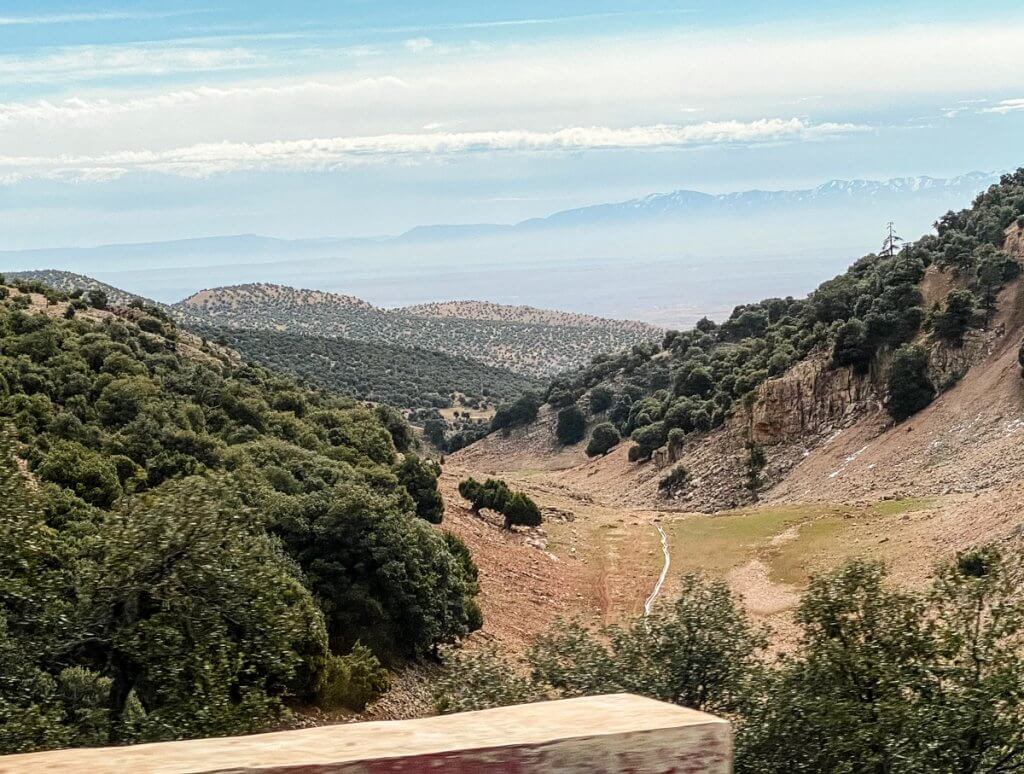
The foothills of the Atlas Mountains. 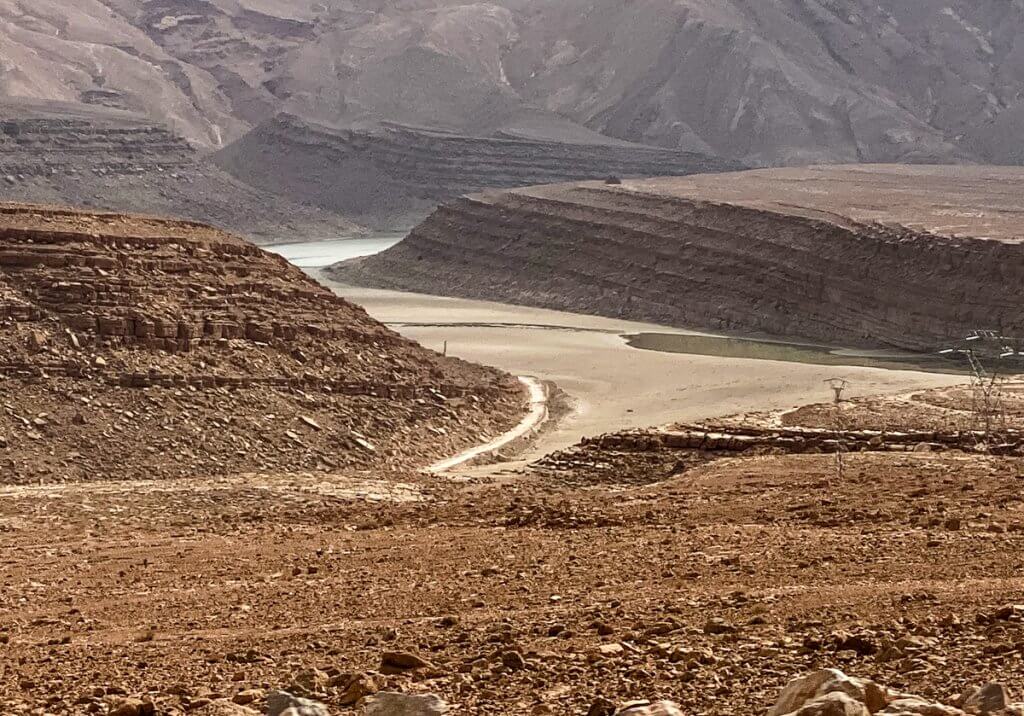
Deep in the Middle Atlas Mountains. 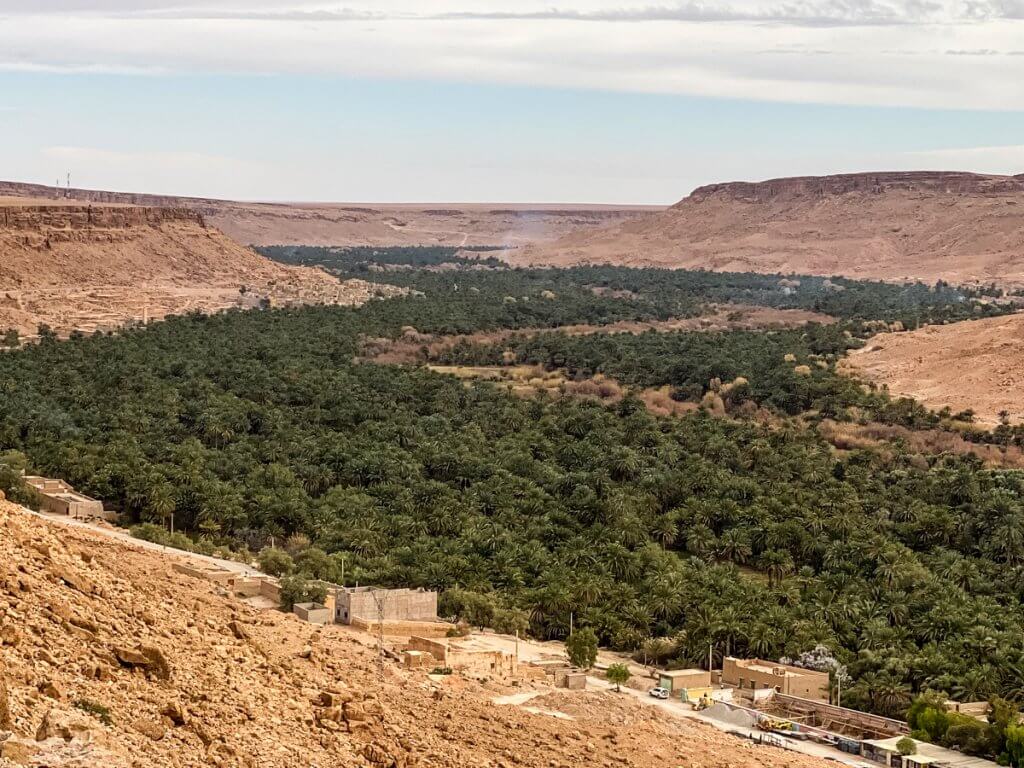
A “river” of olive trees lines this river bed in the Middle Atlas Mountains. 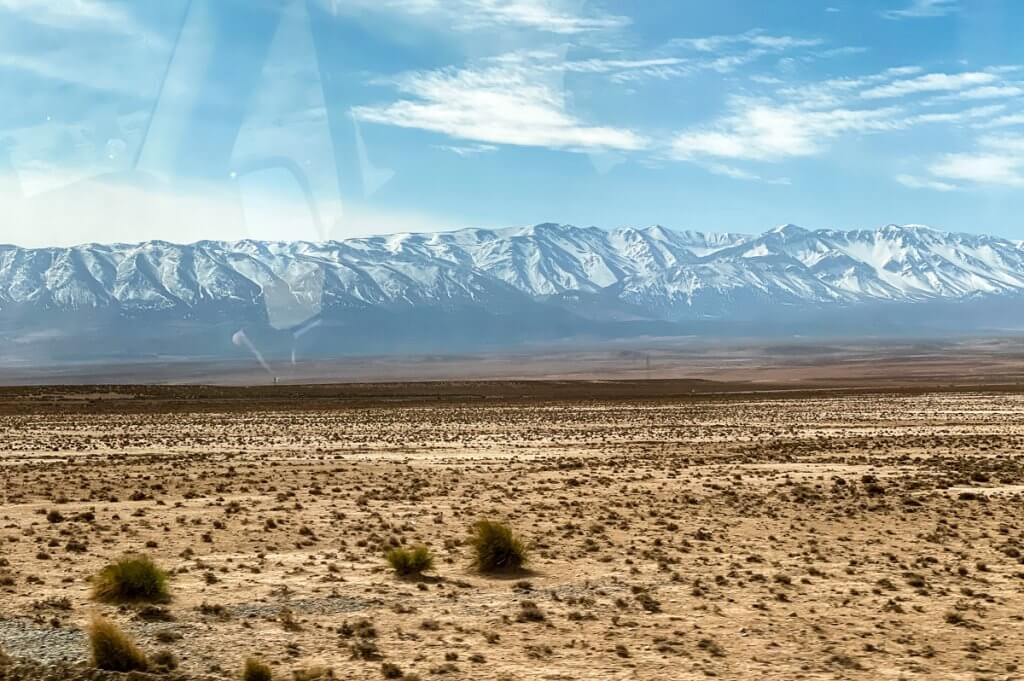
The High Atlas Mountains in the distance.
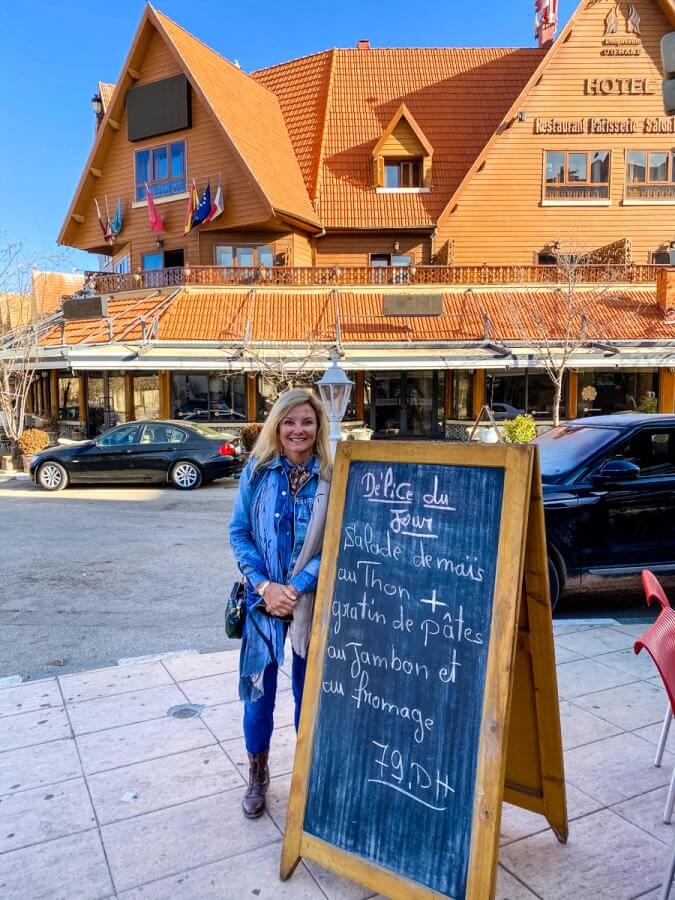
On the way through the Atlas Mountains, we stopped in Ifrane, a town nestled in the Middle Atlas Mountains. Becoming known as Africa’s “Little Switzerland,” it just so happens to be near a ski resort. At an altitude of 1650 meters – complete with cedar and oak forests – Ifrane boasts powdery snow in the winter – sometimes! (not this year). In the summer, too, Ifrane is known as a cool mountain city to escape to.
Erg Chebbi in the Desert
Erg Chebbi is one of Morocco’s several ergs – large seas of dunes formed by wind-blown sand. Technically all these ergs are within an area of semi-arid Pre-Saharan Steppes and not part of the Sahara desert which lies some distance to the south.
In places, the dunes of Erg Chebbi rise up to 150 meters from the surrounding rocky desert and altogether span an area of about 30 kilometers from north to south and up to 5–7 kilometers from east to west lining the Algerian border.
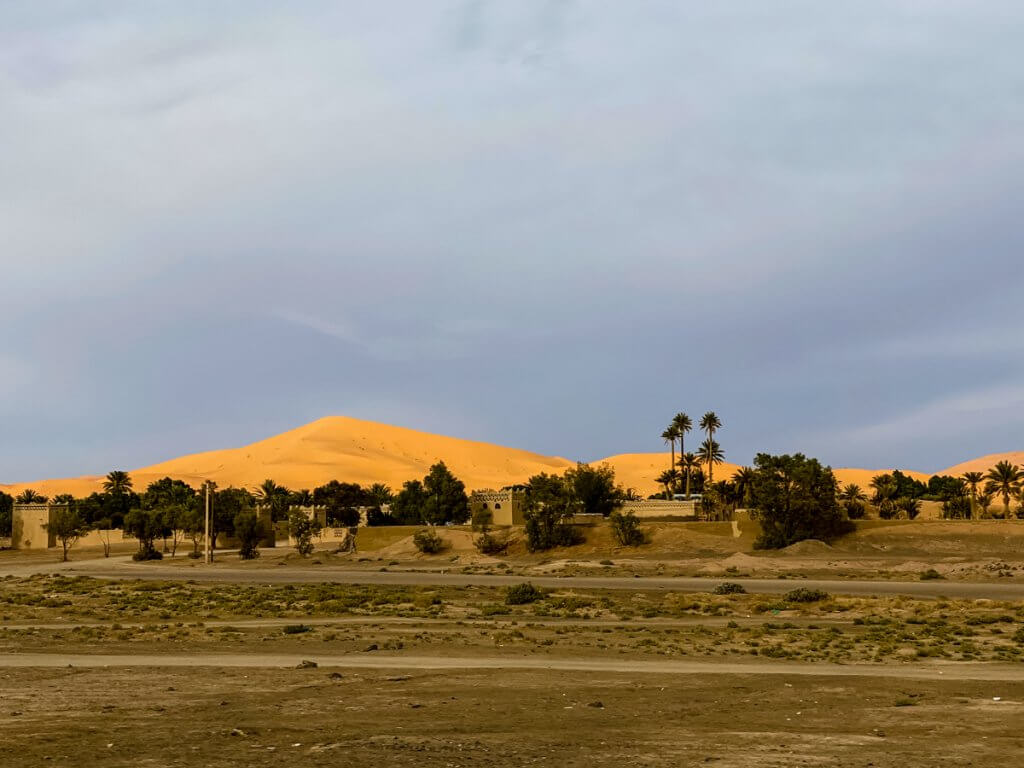
Over the Atlas Mountains and into the Moroccan desert…. 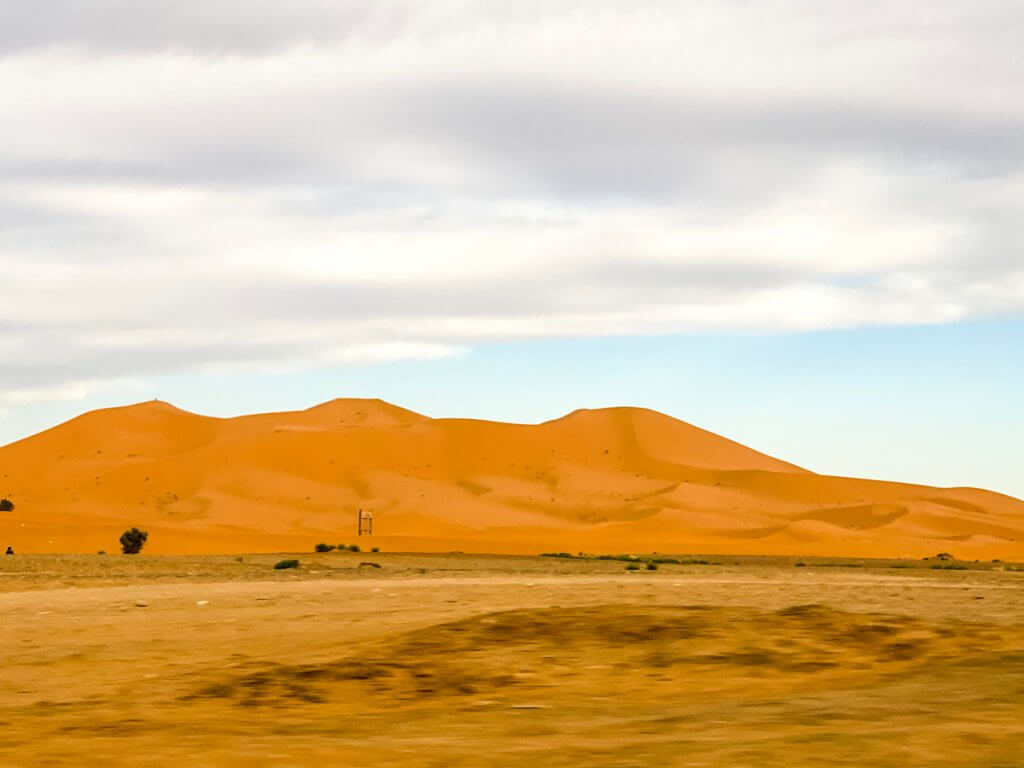
….just in time to catch the late afternoon sun highlighting the sand dunes.
The desert was rocky as we first entered it. Then came the sand, flowing and mysterious, rising up into shifting shapes such that one never knows what is hidden behind a dune. On and on this goes until one of the hills eventually reveals our magical tented camp, settled in the middle of nowhere.

Erg Chebbi Tented Desert Village
Located in a remote corner of the Sahara and nestled within the towering dunes, our specially-designed private mobile camp was a fantastic way to experience the serenity of the desert. The tents, which are a traditional Arabic “Caidal” style and design, were decked out with colorful carpets. Located through a panel of each tent was a private bathroom.
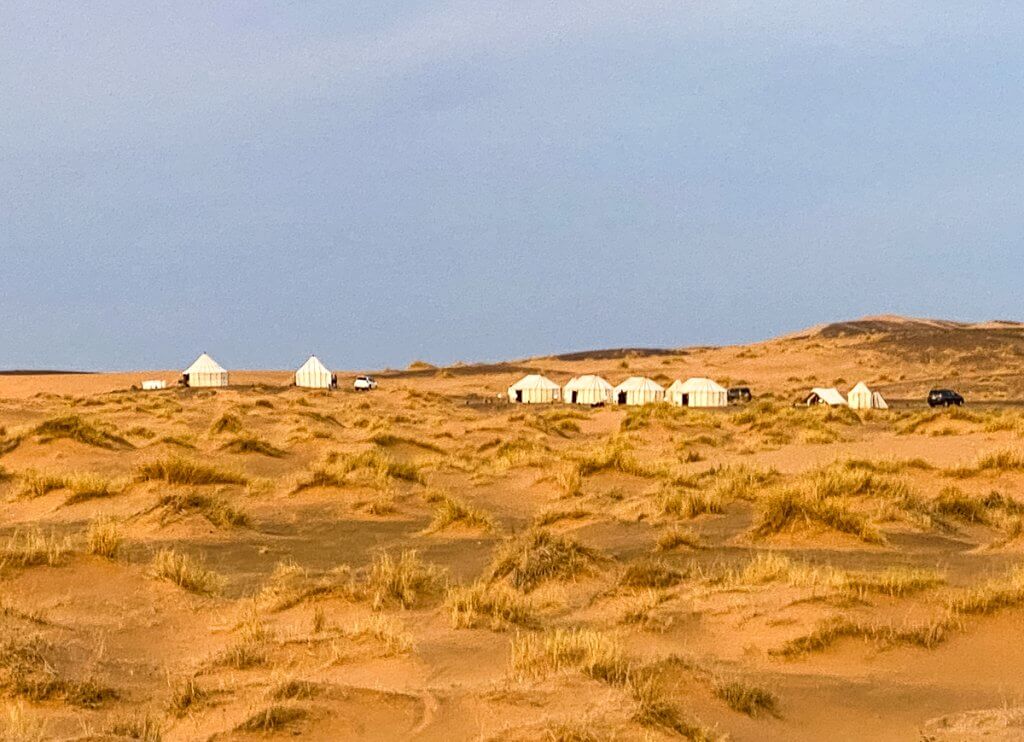
Our home for the night. 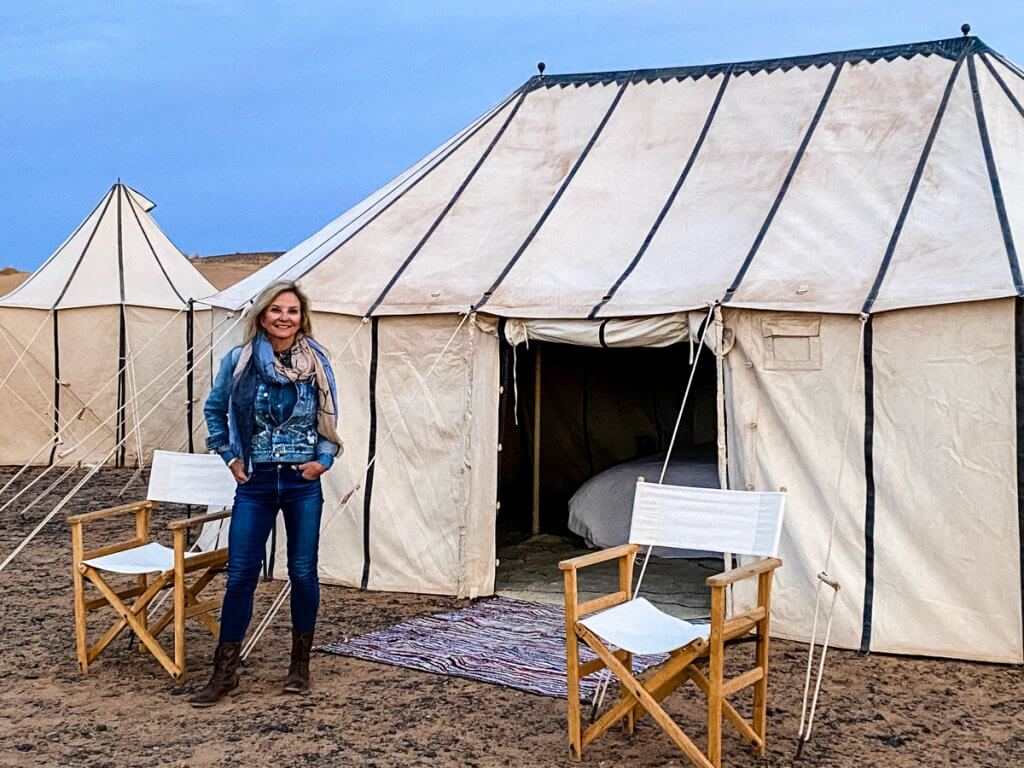
Our tent which was set up that day. 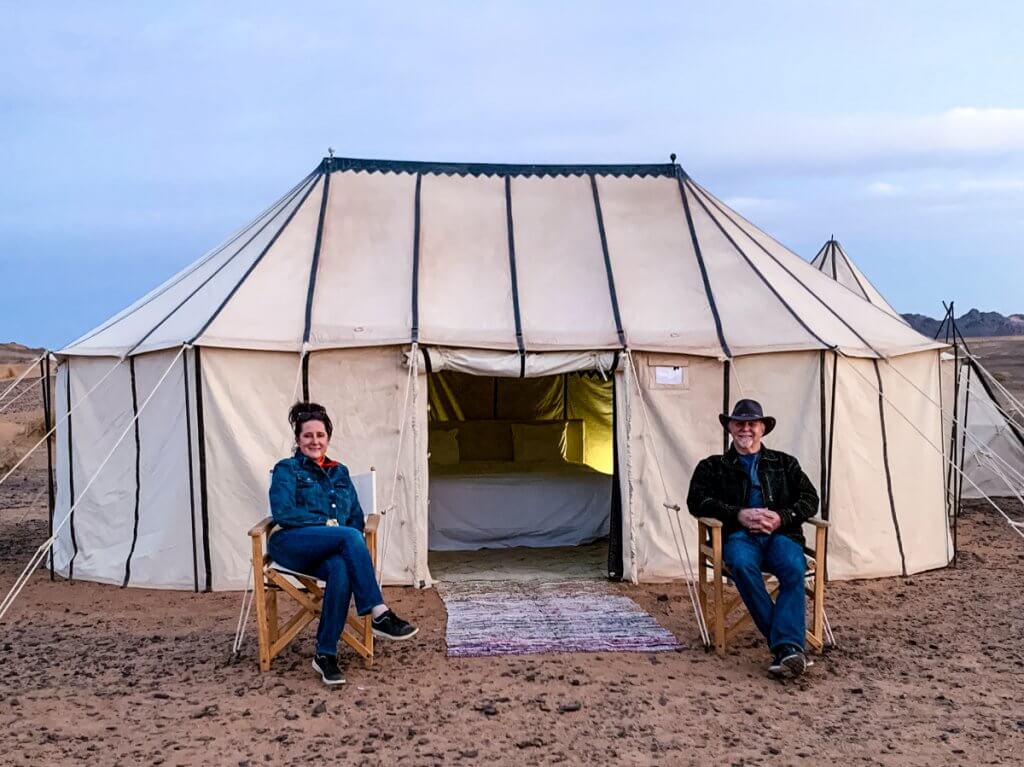
Relaxing in their home away from home. 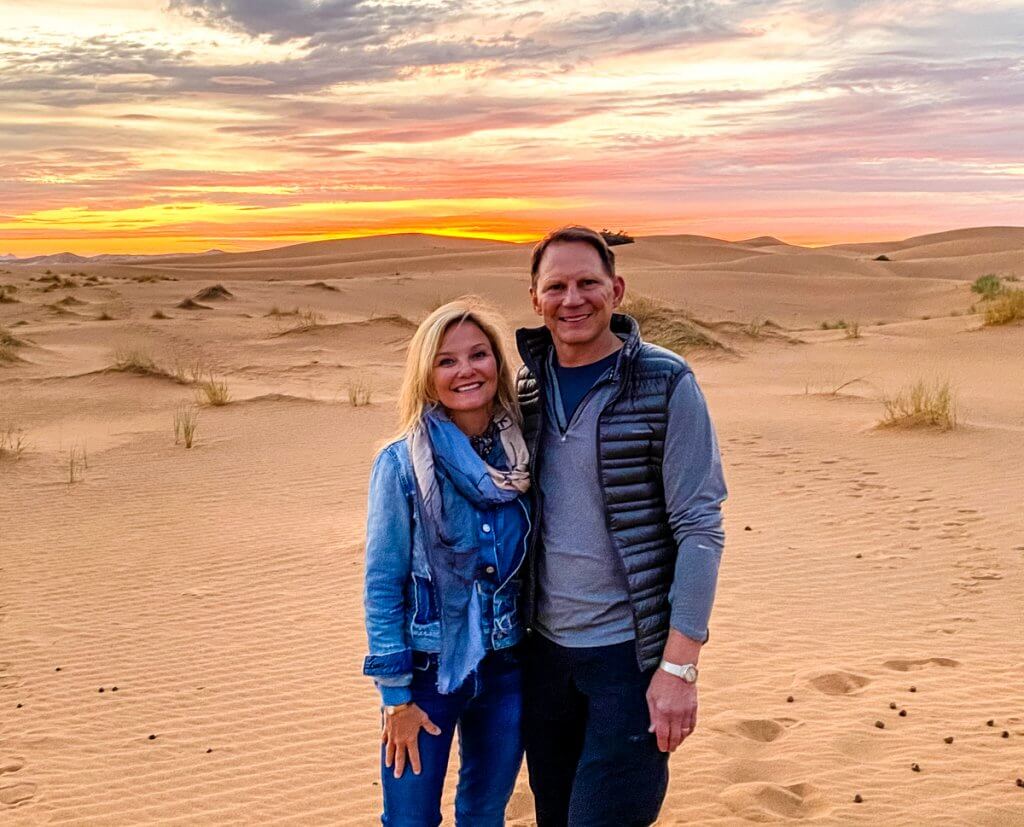
Happy to be in the Sahara Desert.
The first thing on our exploration to-do list was a camelback journey through the nearby dunes.
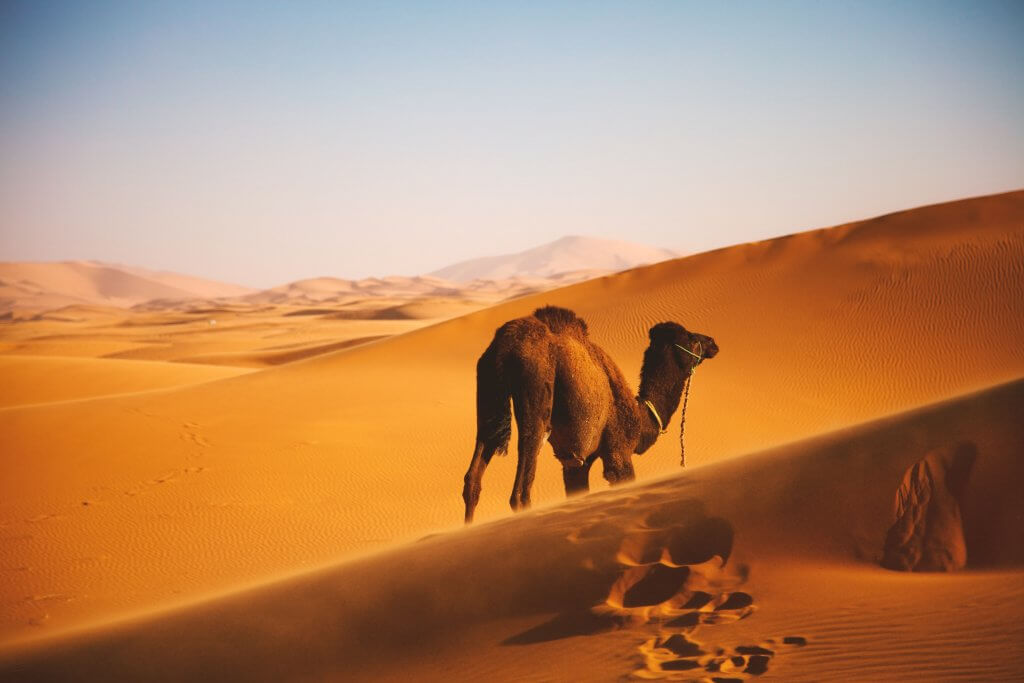
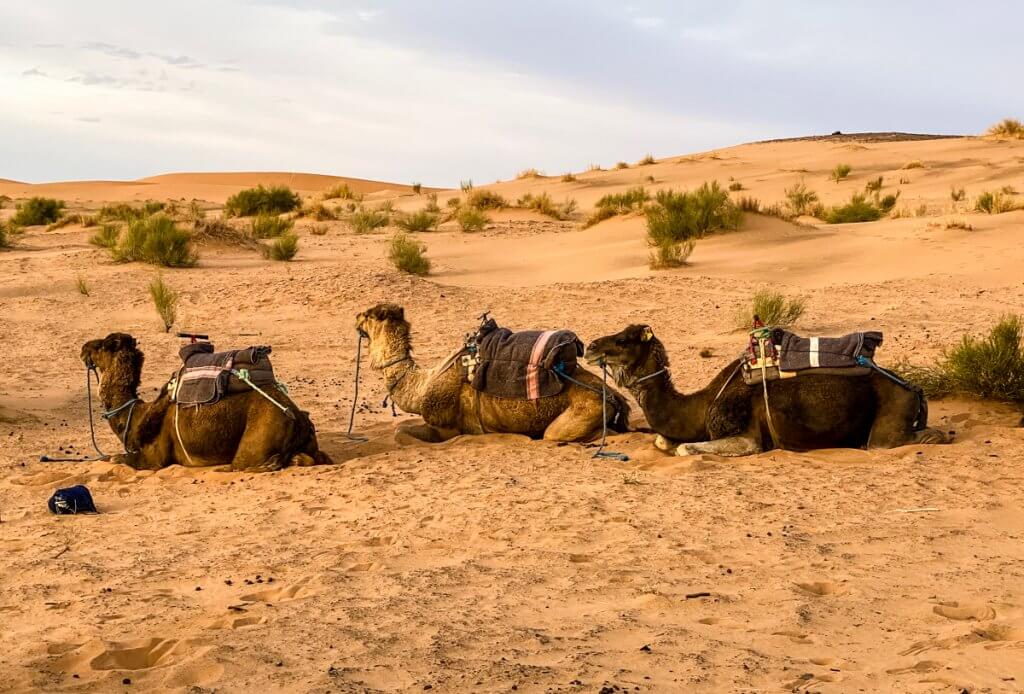
Desert Ubers! 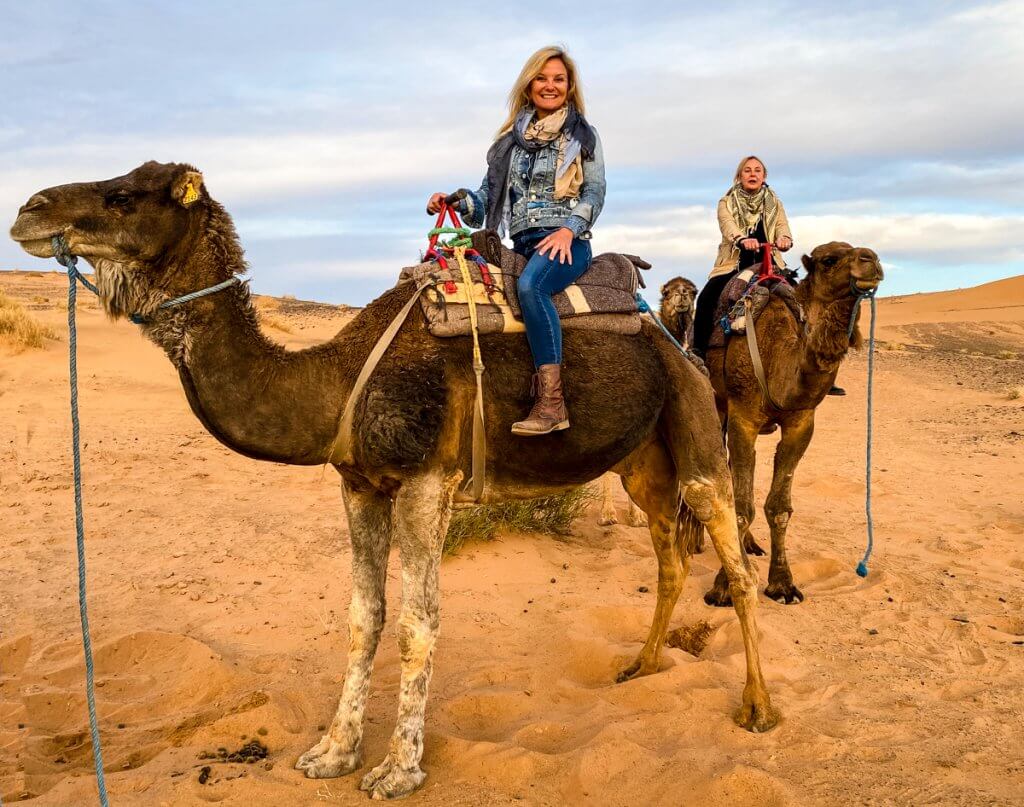
And away we go. 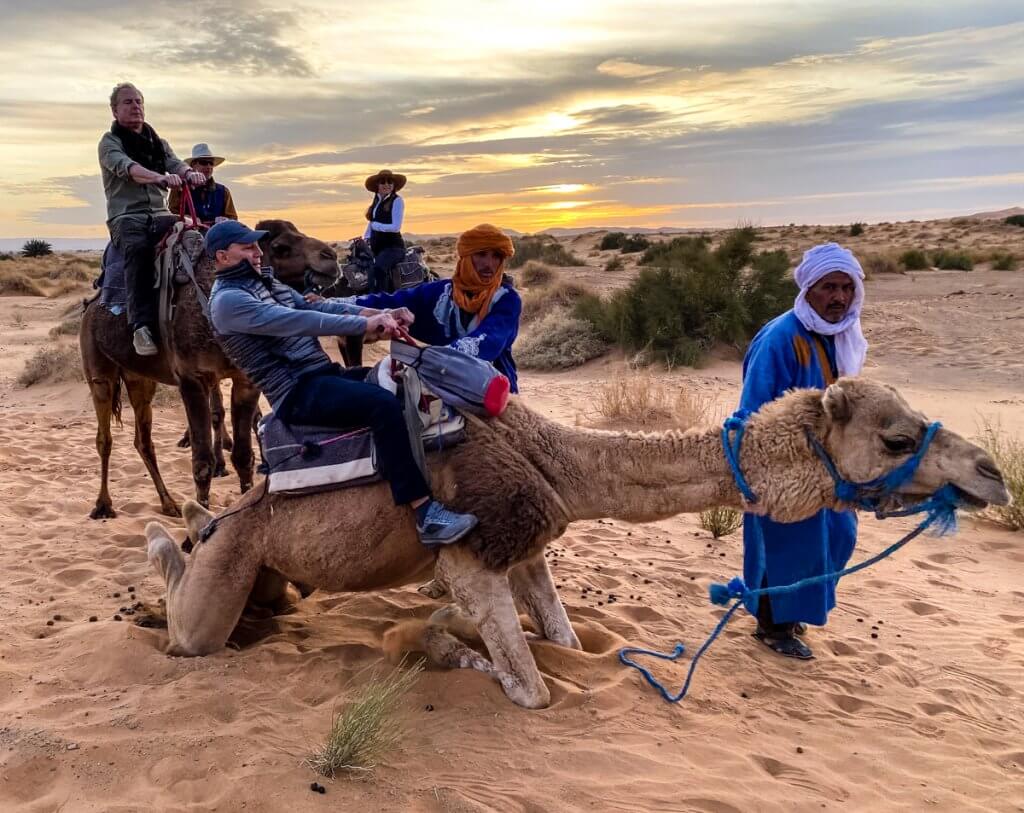
Yeehaw! 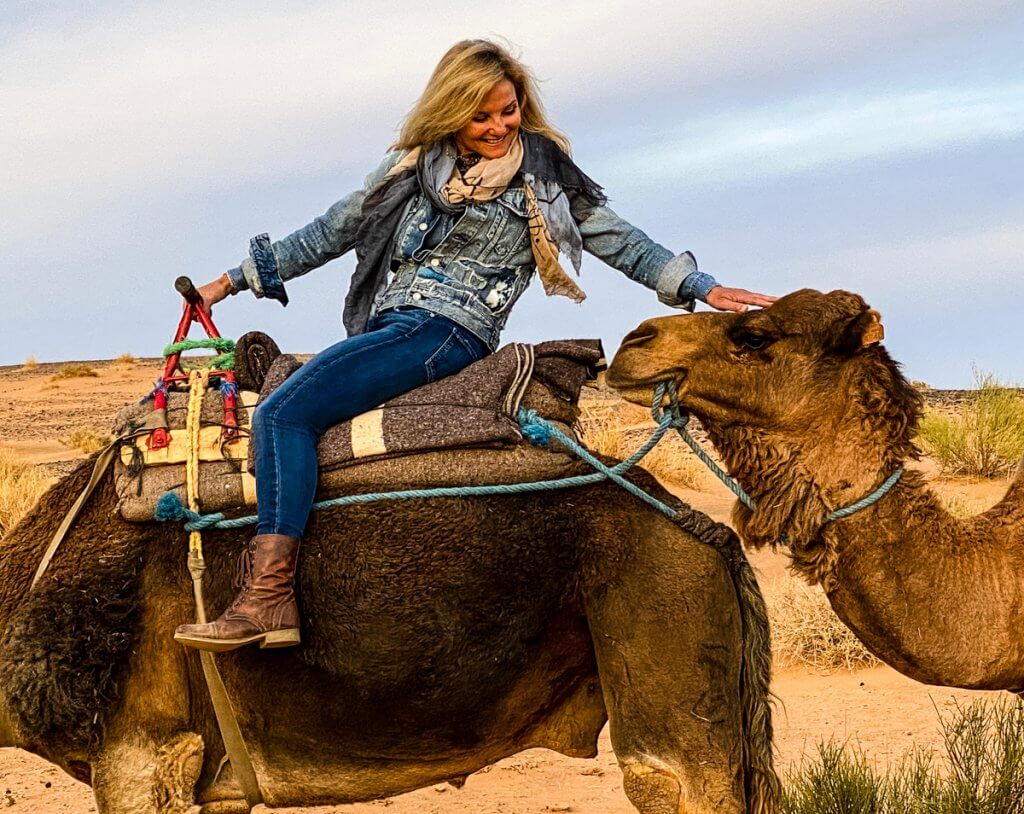
Making friends with the Ubers. 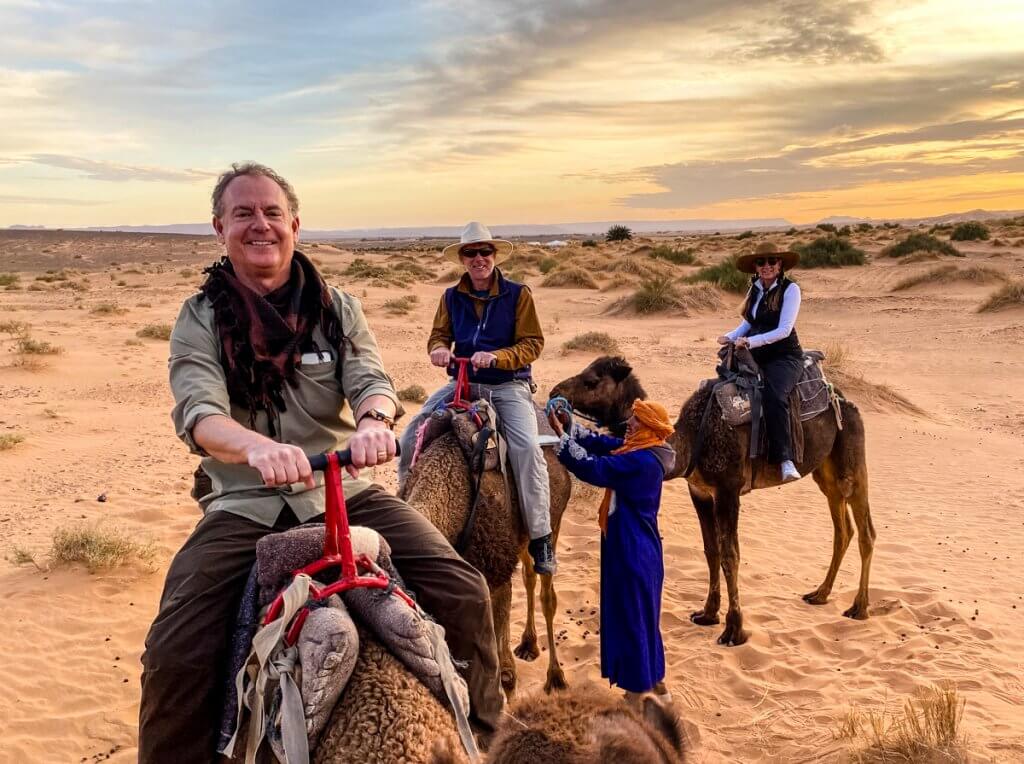
Hey…this steering stick doesn’t work. 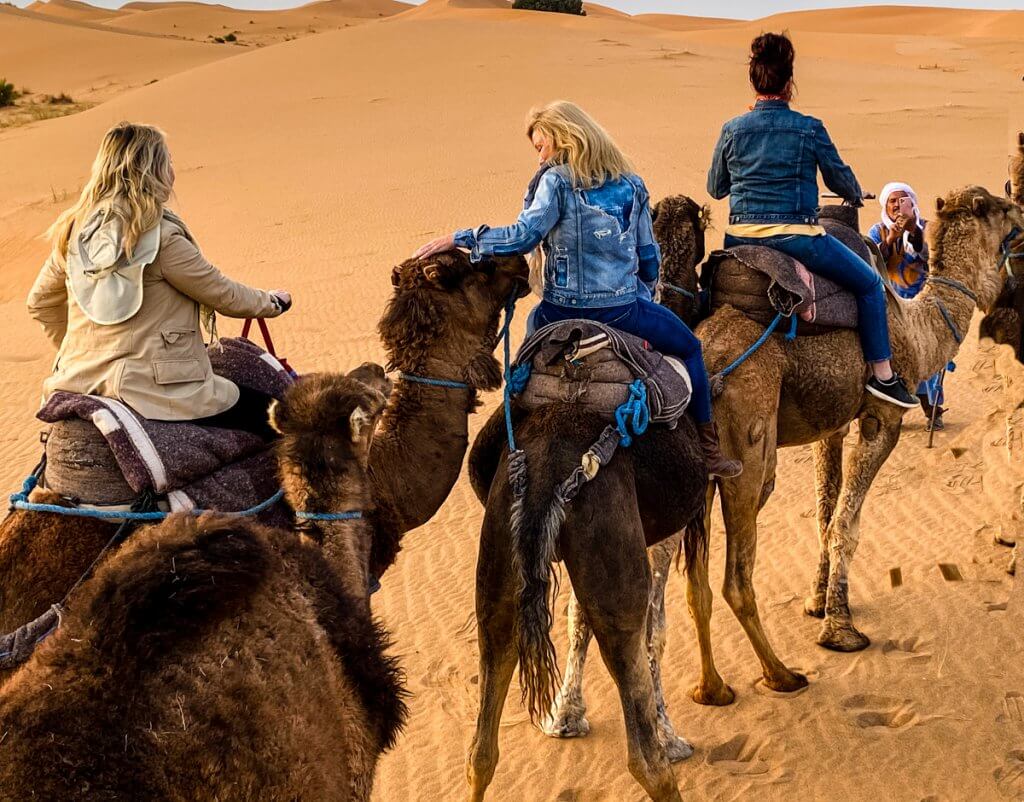
He likes all of her attention. 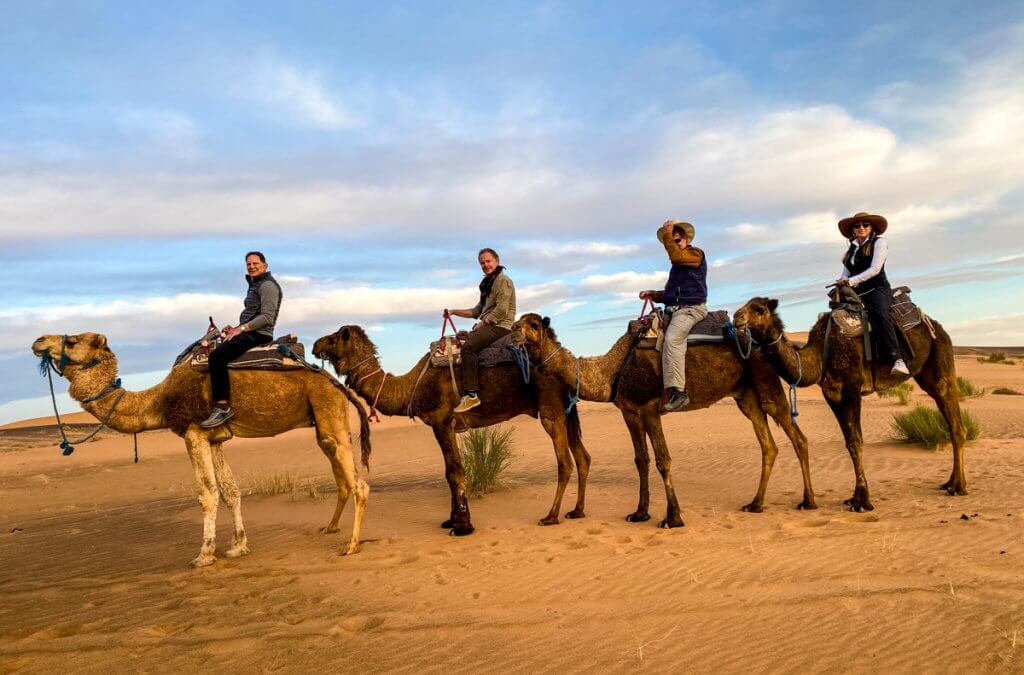
Following the leader… 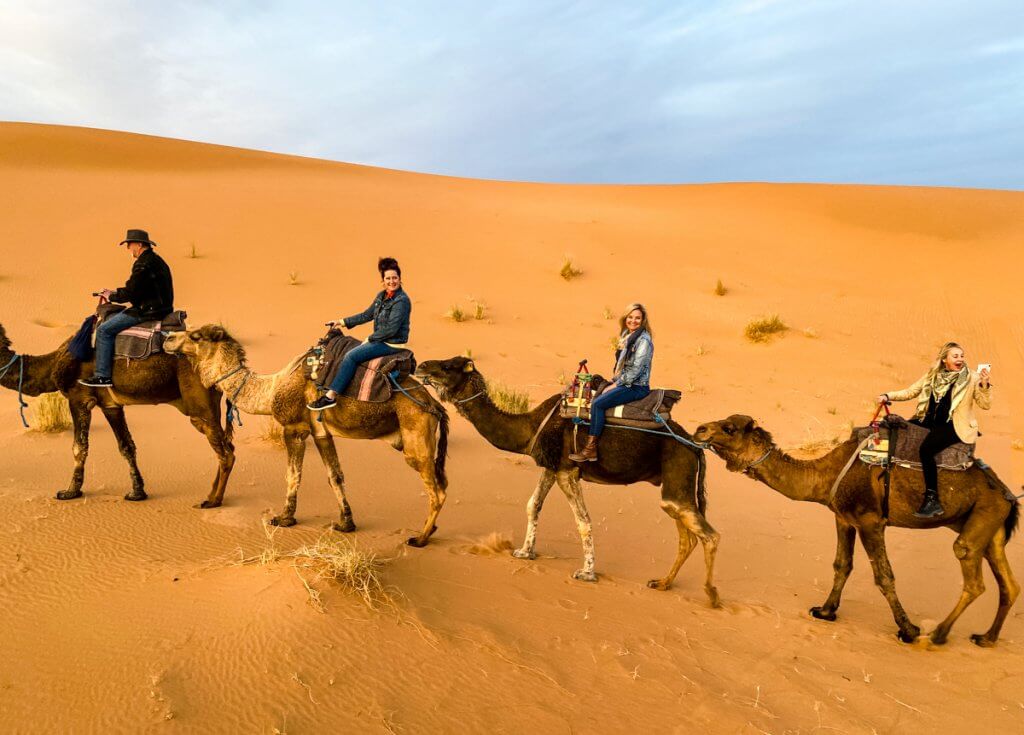
… the leader … 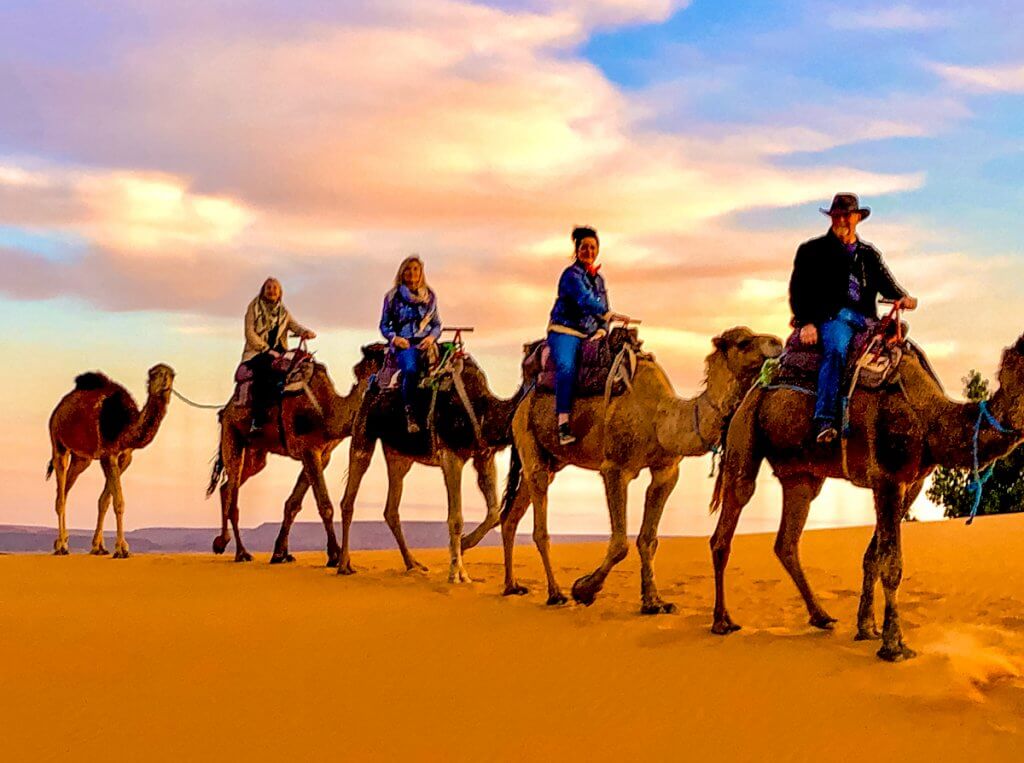
… the leader. 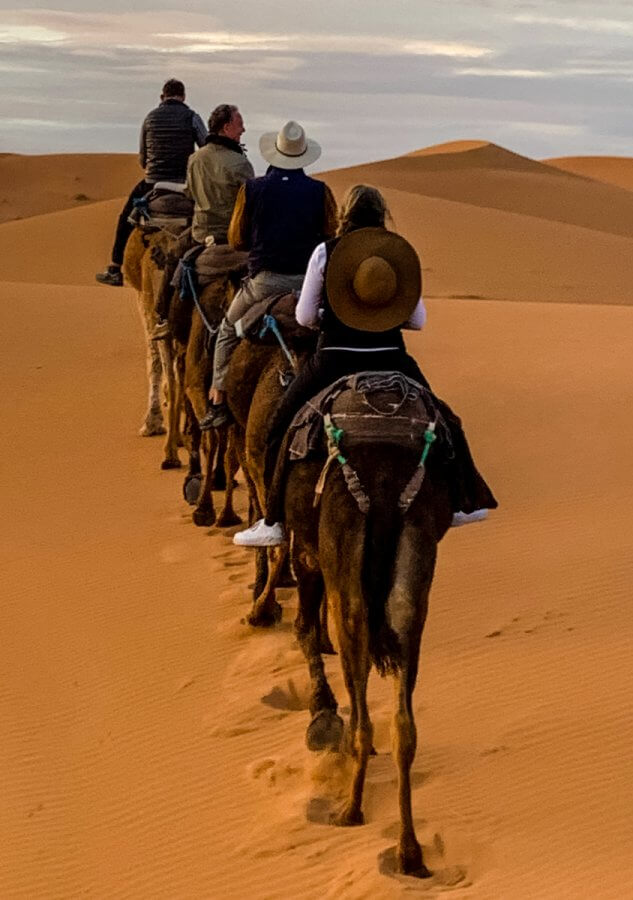
Following the leader, whereever he may go! 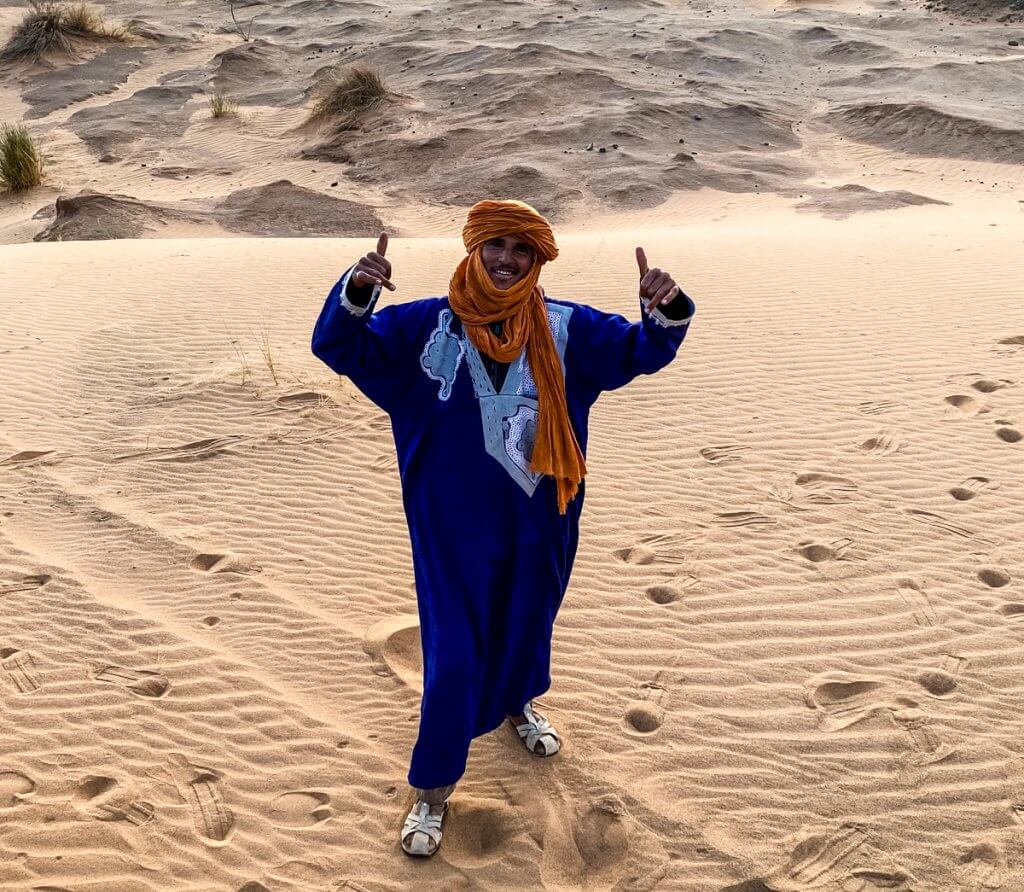
In response to “How did we do”?
After returning to the camp we settled into our tented accommodations before savoring a mouth-watering dinner served around a campfire.
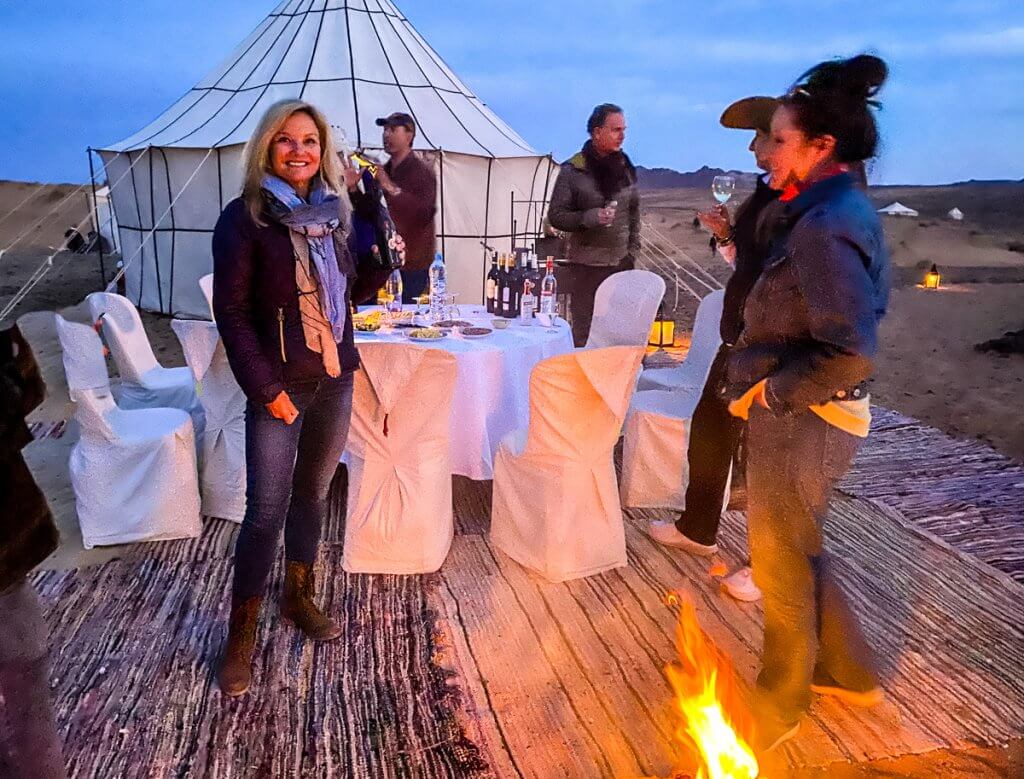
The campfire took this chill off the desert evening. 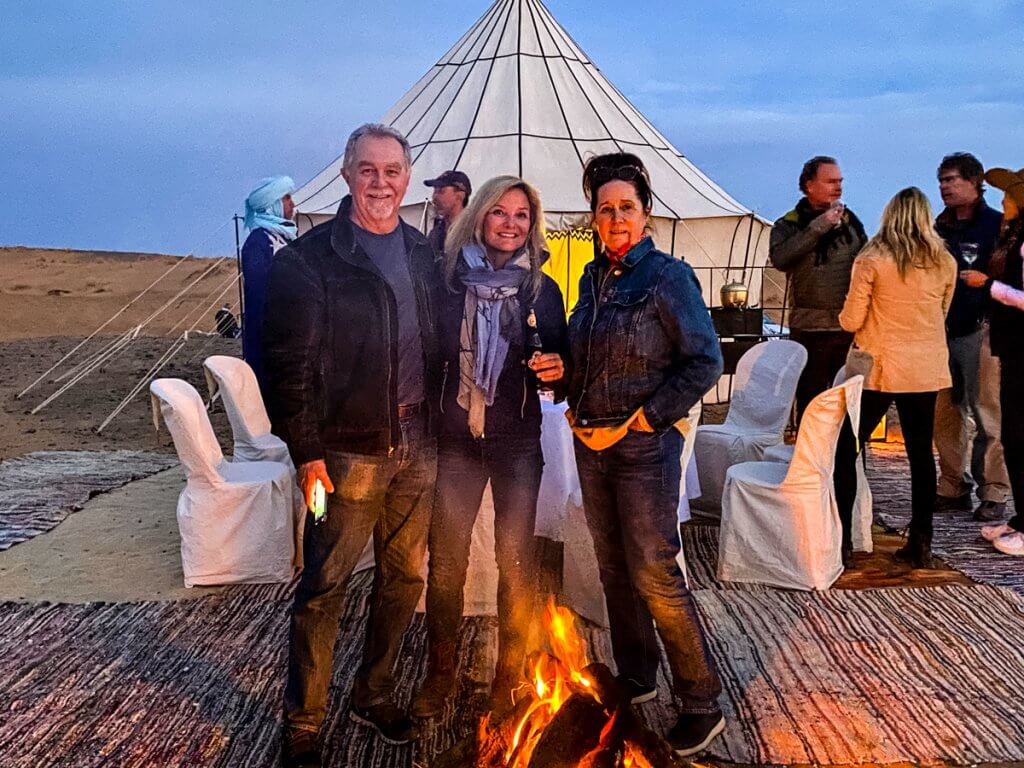
Cocktail hour in the desert. 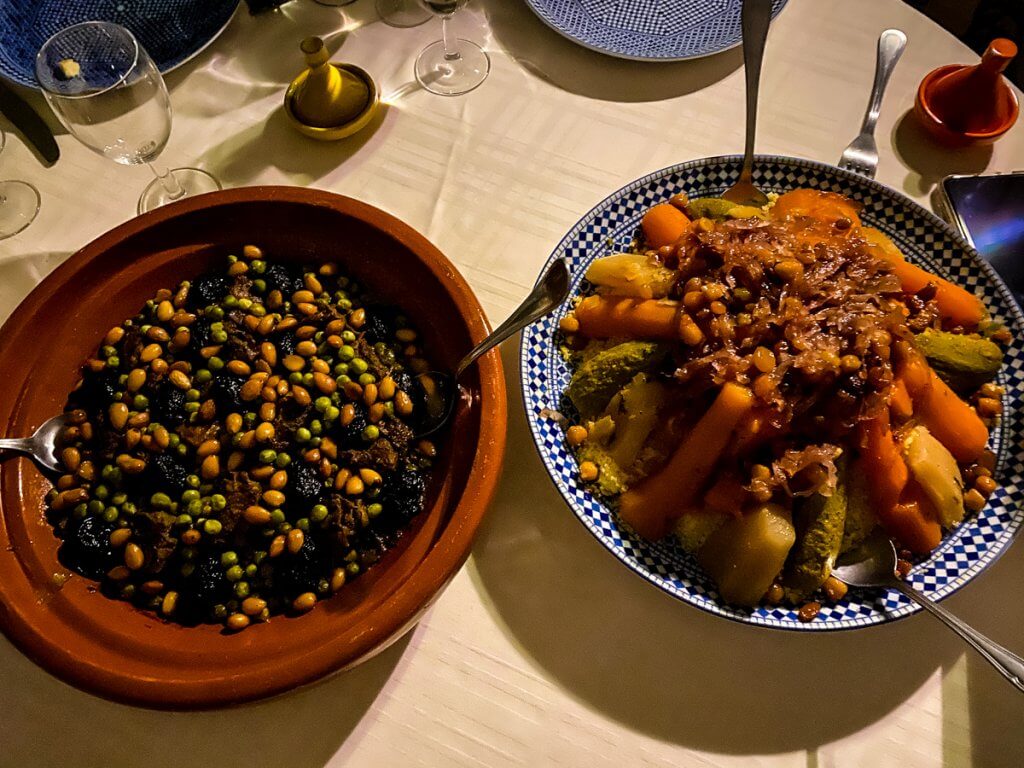
Followed by a traditional Moroccan stew. 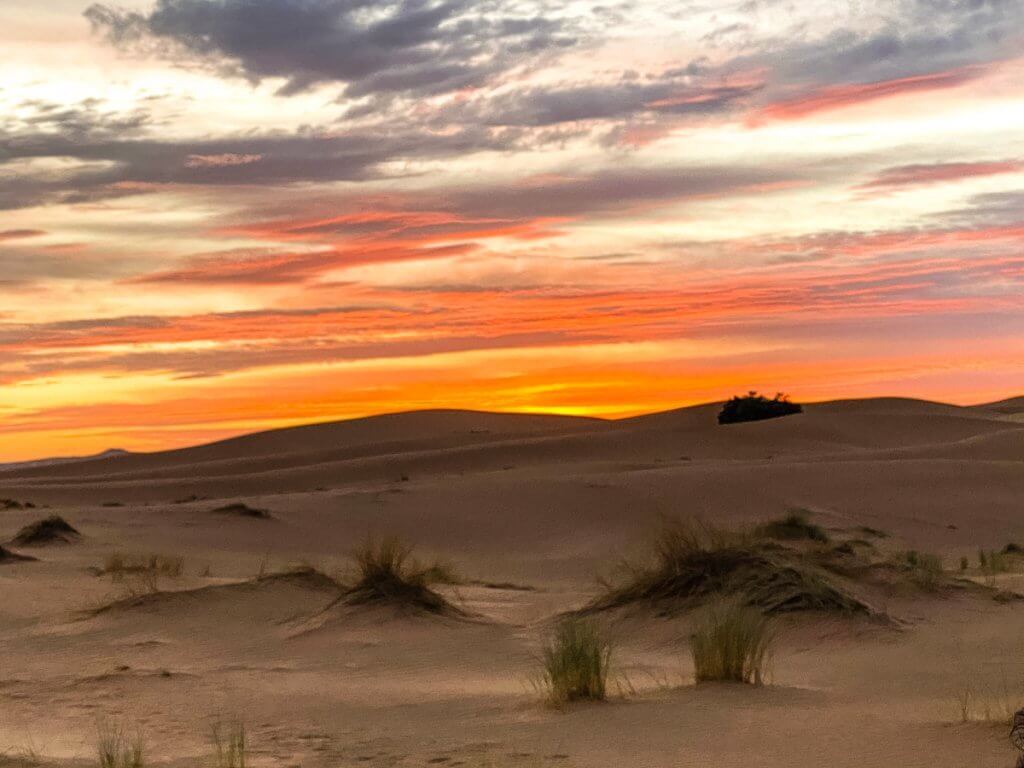
Intense sky as the sun began to set.
There was no electrical service in the camp so that we could enjoy the quiet of the desert with an unpolluted starry sky. And enjoy it we did!
It was fantastic to savor the stunning sunset while enjoying the peacefulness and tranquility in the luscious orange wilderness. We enjoyed the next morning’s sunrise as well.
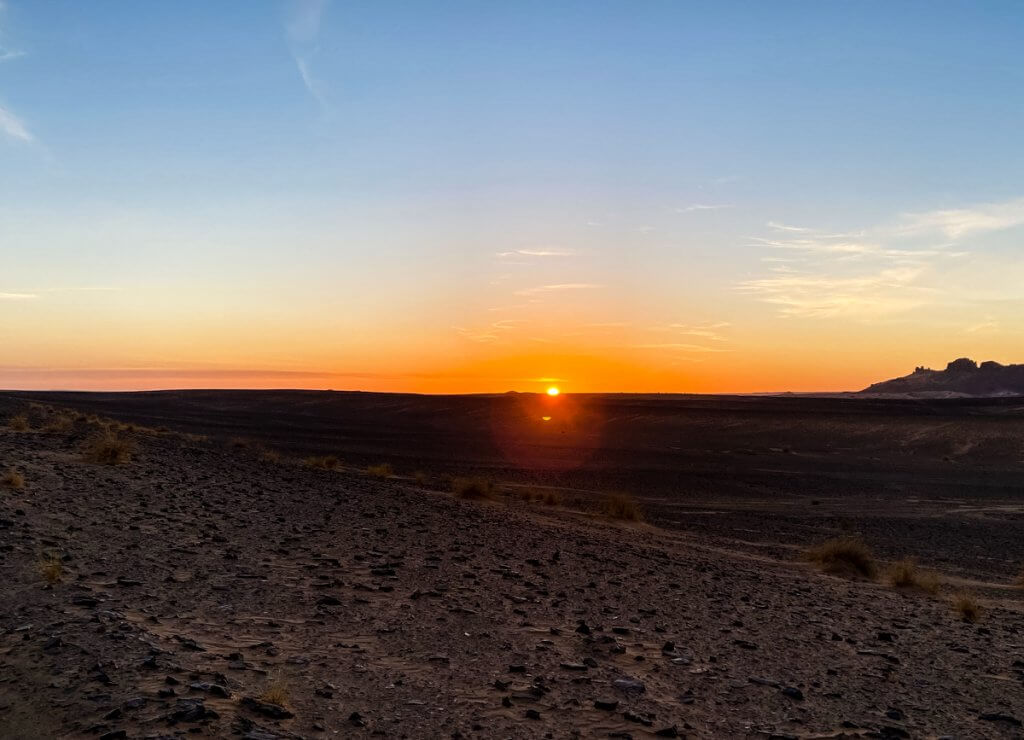
Sunrise the next morning. 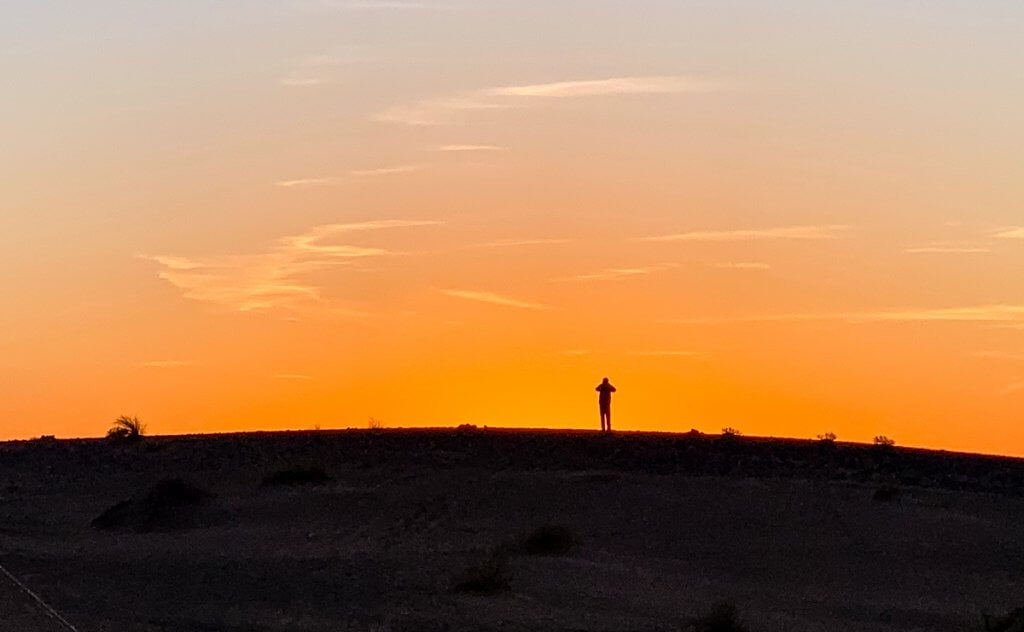
A silhouette against the sunrise. 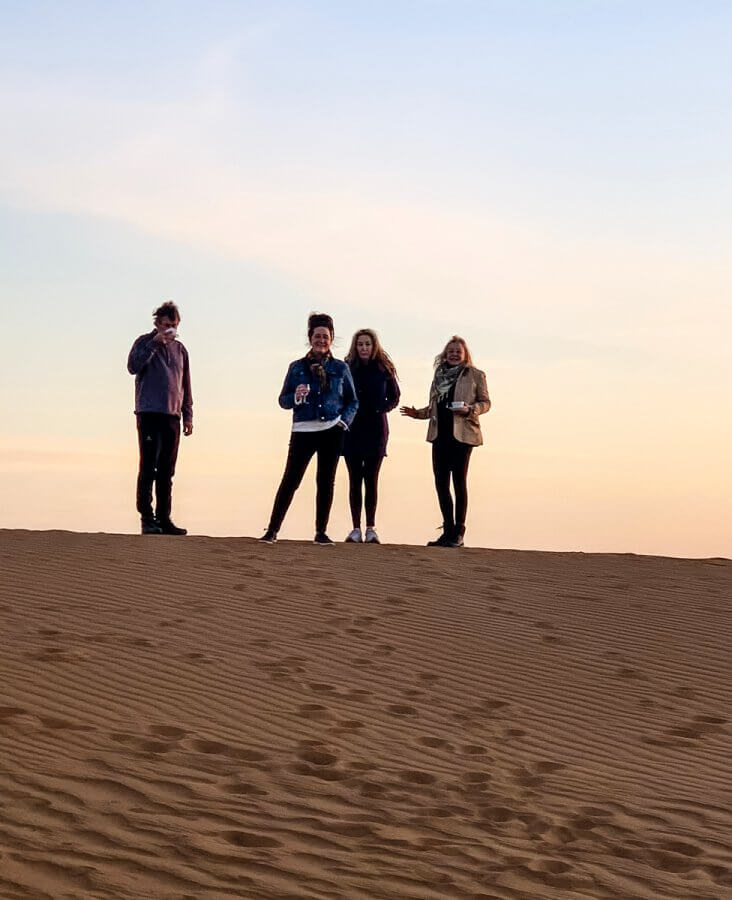
Coffee with a view. 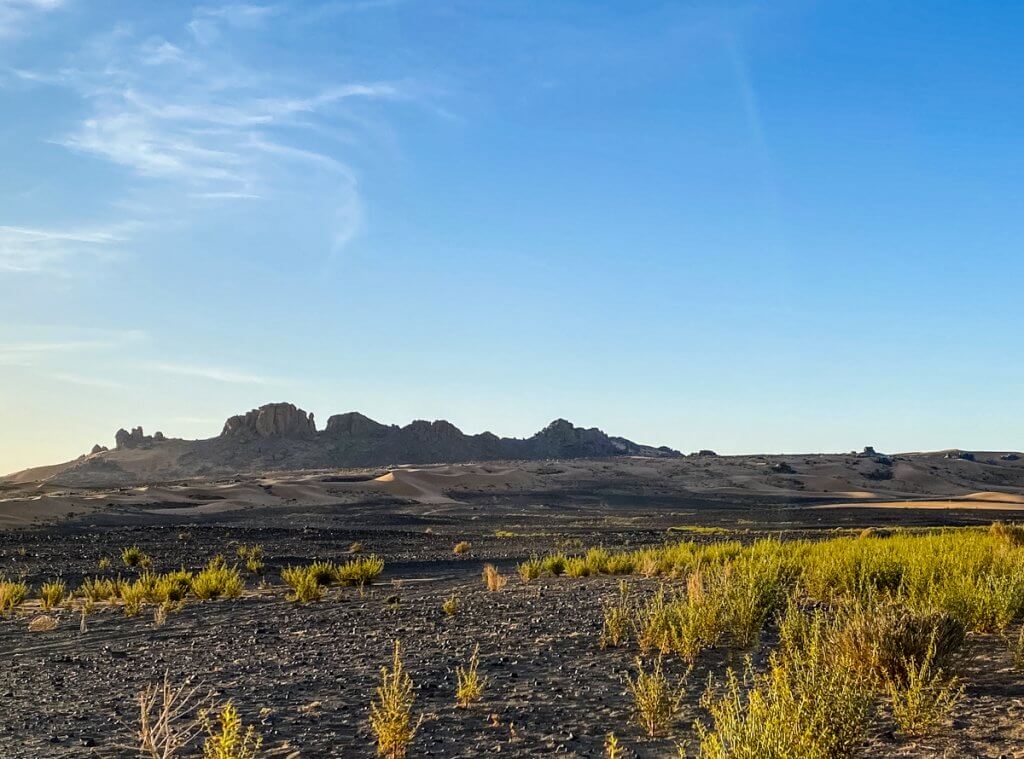
Rock outcropping in the distant on an early morning walk. 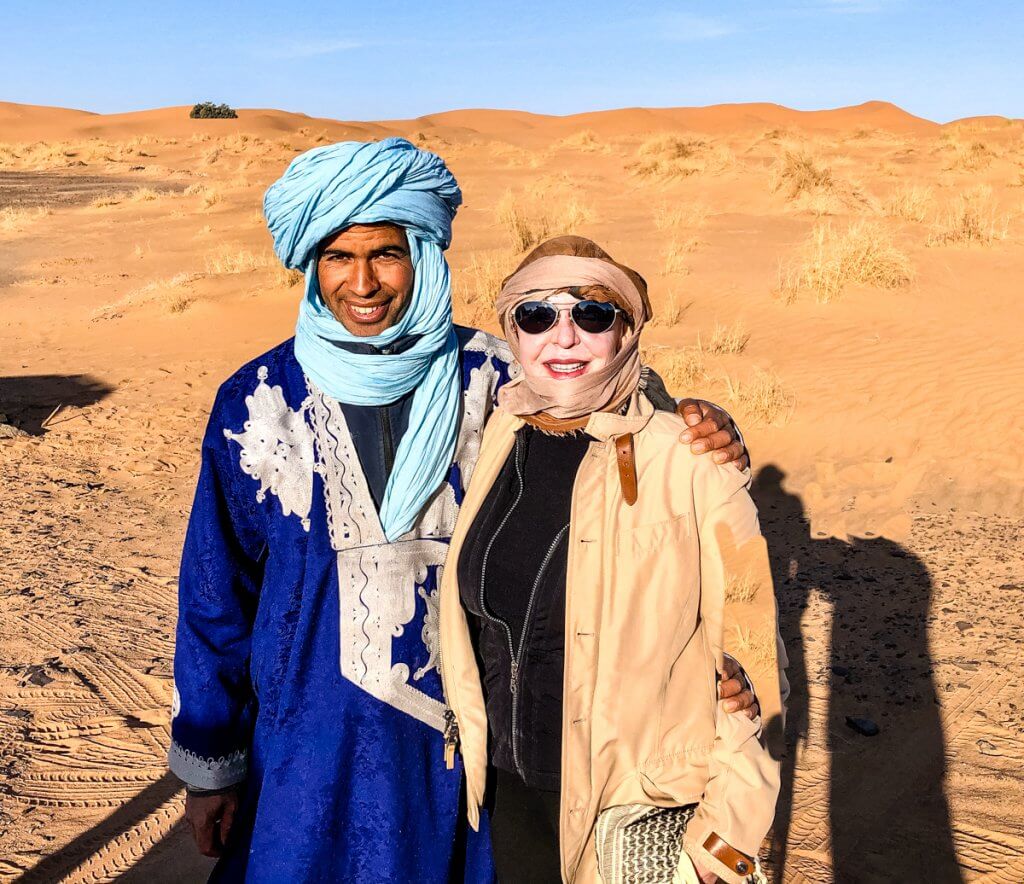
Two berbers pose for the camera. On the left is the mobile tent camp manager. 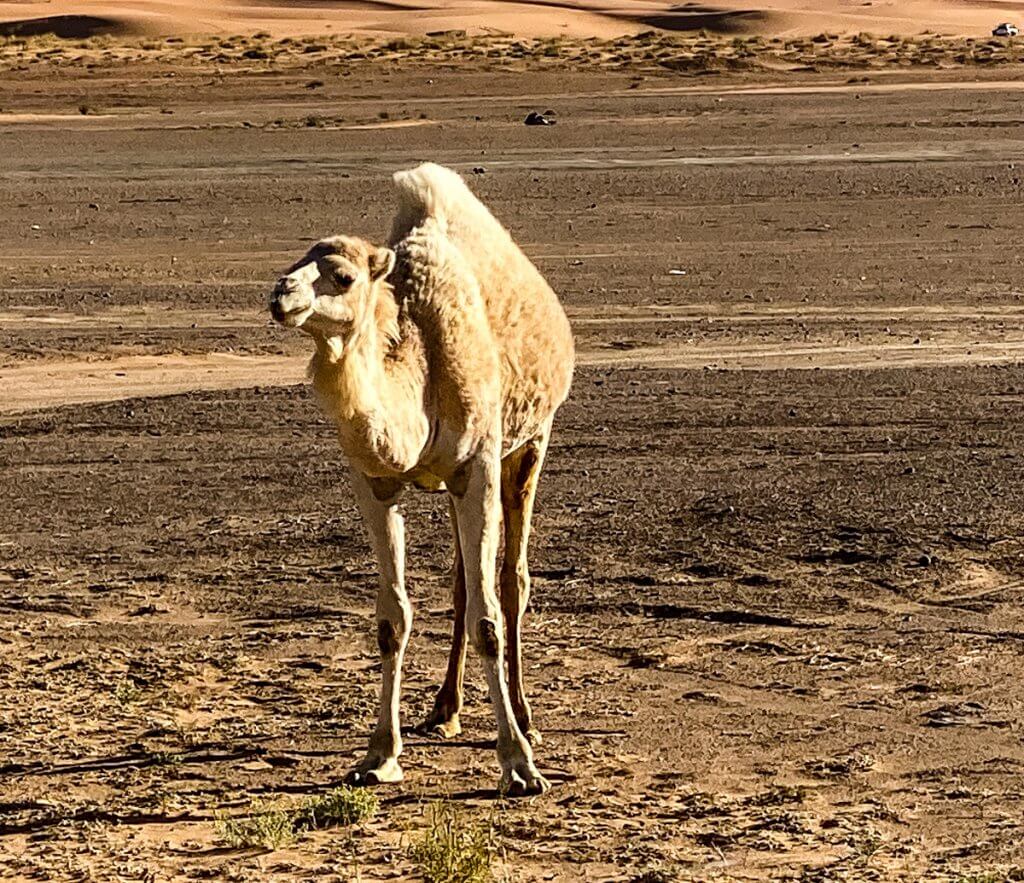
We were told the owners of some camels turn them loose to forage.
Erg Chebbi to Marrakesh
We then started our journey to Marrakesh. But first, we stopped at a fossil quarry in nearby Erfoud.
Much of the Atlas Mountain range is actually made up of rocks from the Paleozoic era meaning the region dates back some 245 to 570 million years. Those prehistoric limestone rocks have beautifully preserved fossils from all kinds of creatures such as trilobites (think the ancestors of modern insects, spiders, centipedes, lobsters and crabs) and Orthoceras (a kind of squid-like nautilus covered by a cone-shaped shell). The area is now virtually an open air, (once-underwater) world incredibly rich in stunning fossils.
Picture the vast and dry Sahara Desert as a lush green tropical forest. Now add some lakes, waterways and a river as wide as the Danube running through it, feeding the flora and fauna in the area. Hard to imagine, but this is actually what the Sahara looked like some 100 million years ago. And even way before that, a part of what is now the Sahara was actually submersed in ocean water. The region flourished in the prehistoric age and much of the evidence from that time has lived on until today in the form of exquisitely preserved fossils.
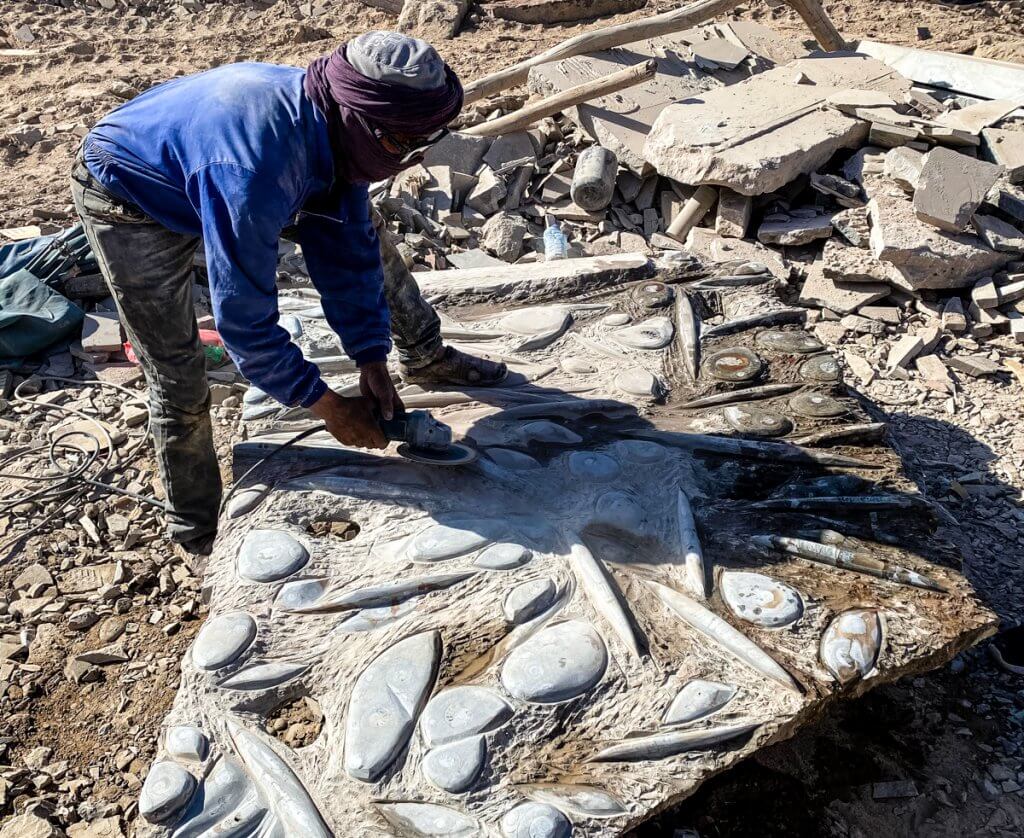
Ammar Bouaich grinds away the stone surrounding the fossils. 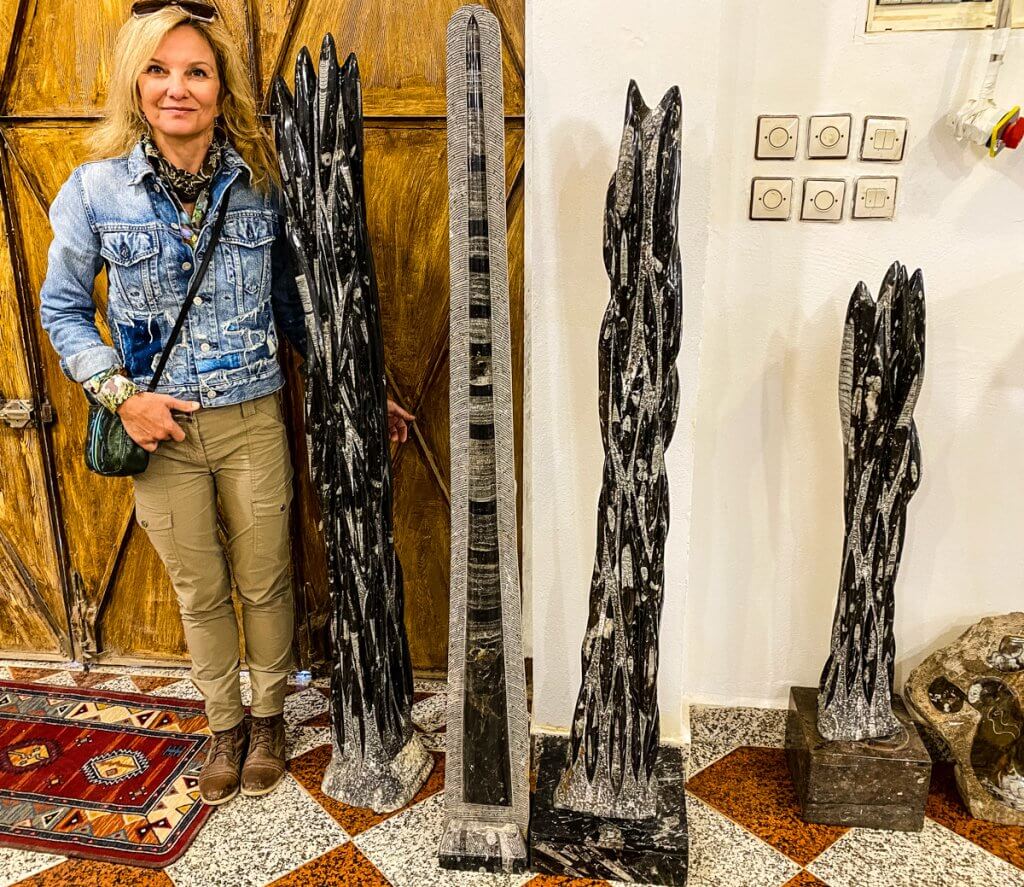
And ends up with some beautiful specimens such as these “sculptures” of polished Orthoceras (Cephalopod) fossils. 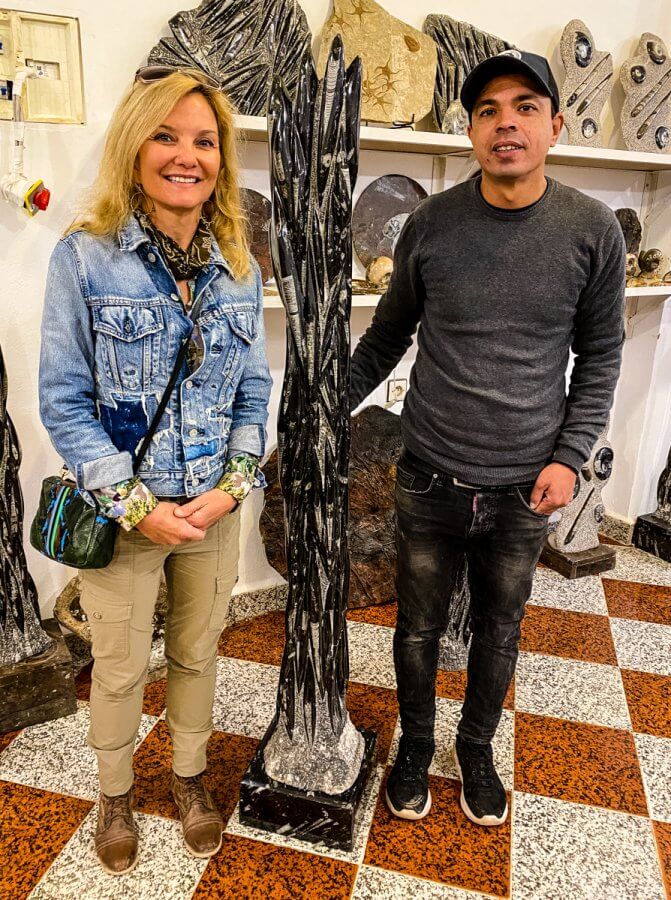
We ended up purchasing this gorgeous piece. The fossils commonly known as orthoceras are extinct “straight-shelled” cephalopods that lived during the Upper Devonian period around 400 million years ago. They lived inside of their shell, had tentacles they could use to grab food and used jet propulsion, squirting water to move.
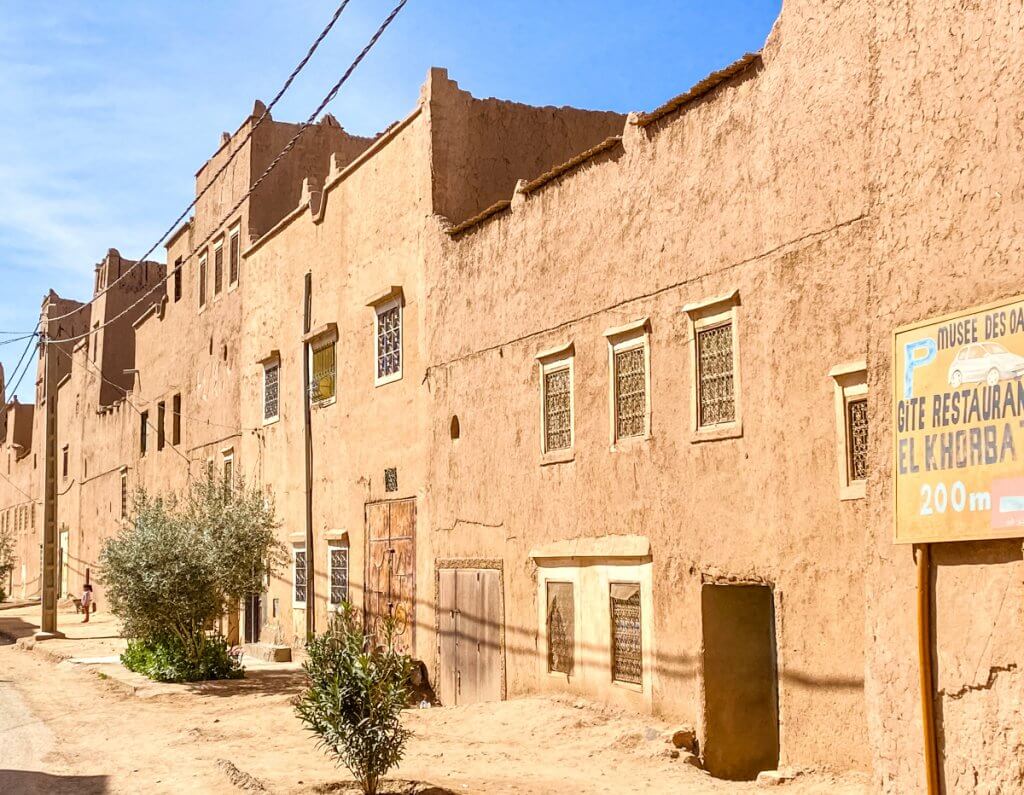
We stopped by a small town that had very few outside access points as a protection against invaders and raiders. 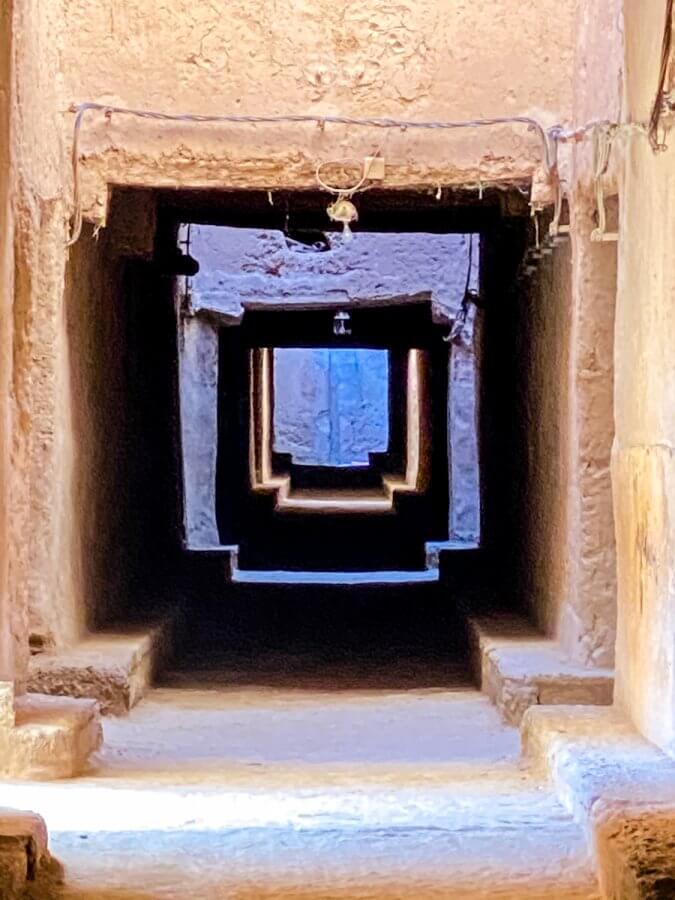
Instead, the walkways and roadways were in the interior. 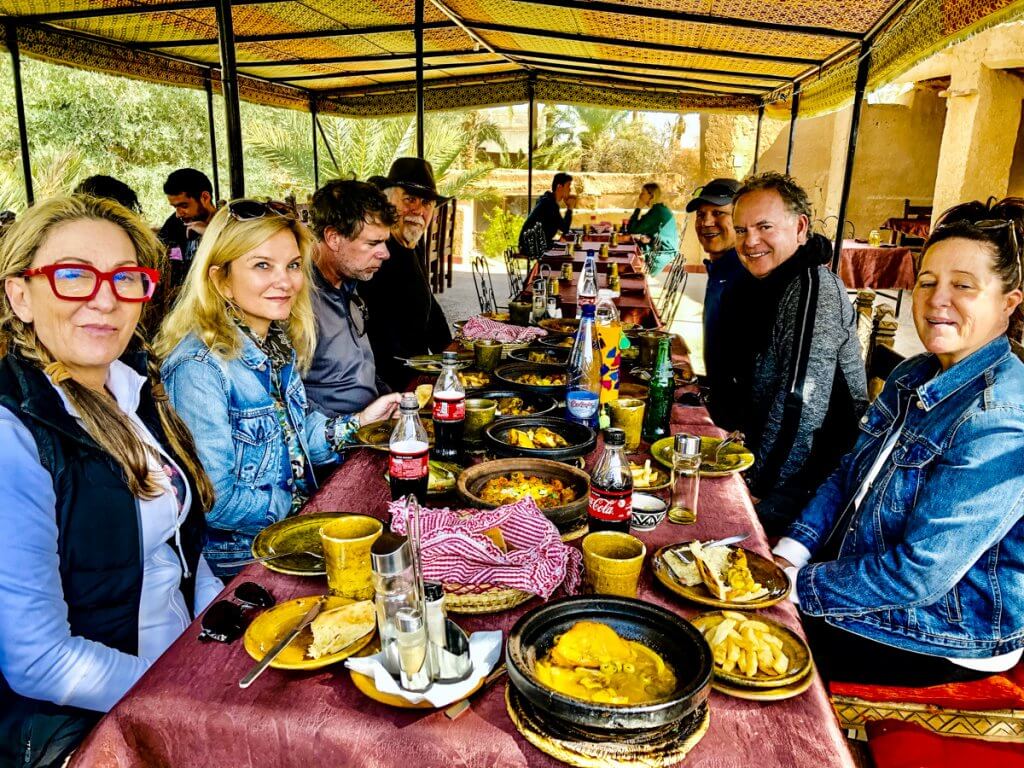
We made our way to lunch located in the interior of the complex. 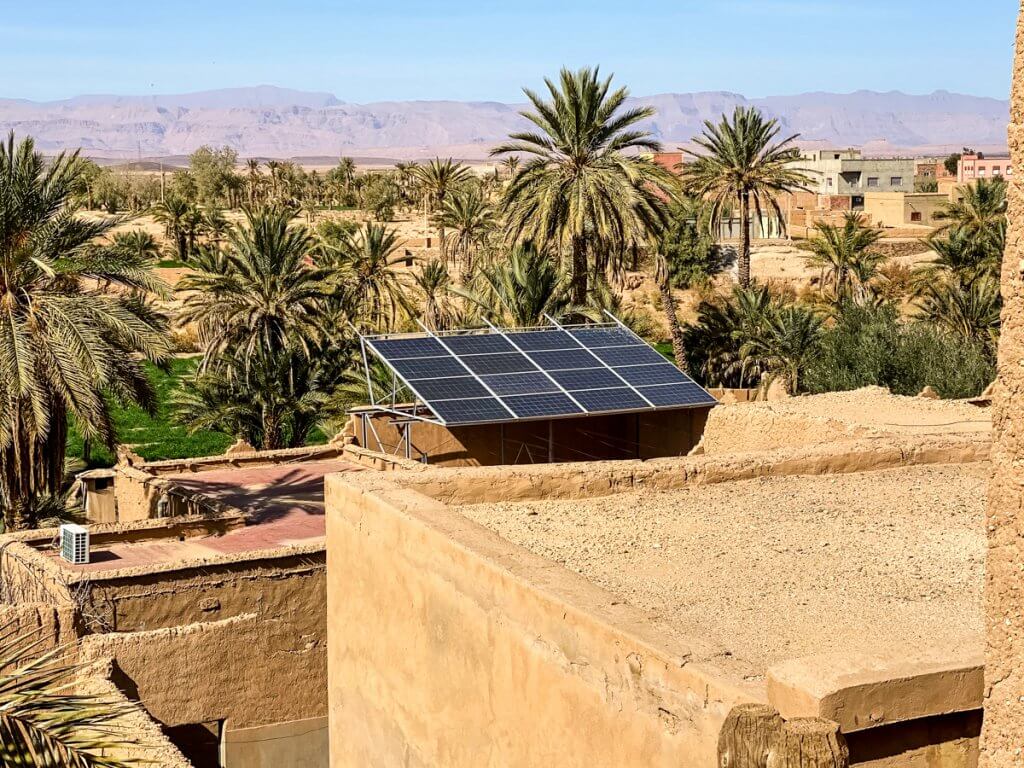
Glad to see the solar panels. 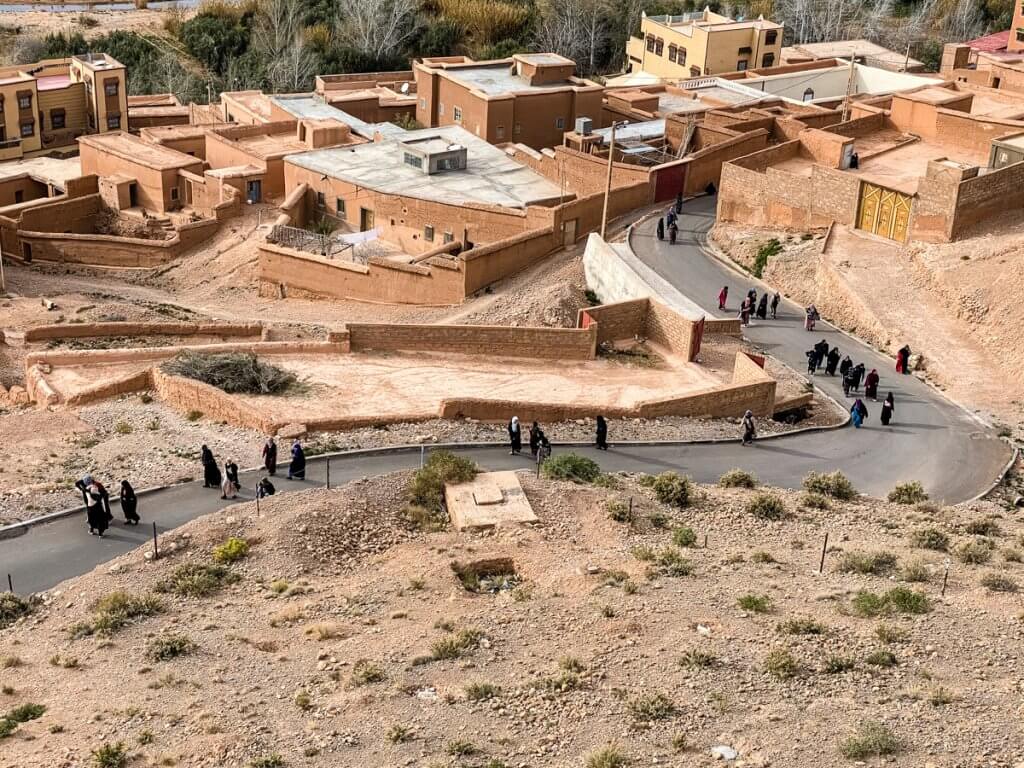
Women walking back home after some type of gathering.
Continuing onward we traveled through the stunning Atlas Mountains to reach Marrakesh, we passed by village of Ait Benhaddou.

The village of Ait Benhaddou is the most exotic and best-preserved Kasbah in the whole of the Atlas region. It has been featured in an array of movies, such as Lawrence of Arabia, Jesus of Nazareth, Gladiator and The Mummy.
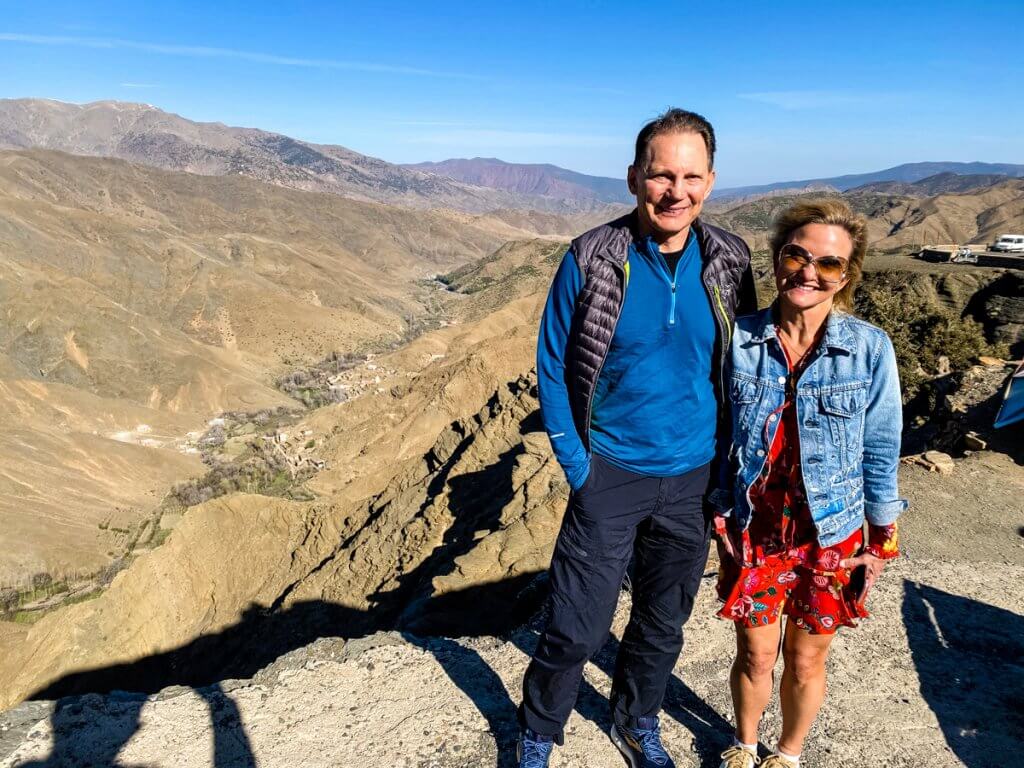
These pics don’t do justice to the stark beauty of the Middle Atlas Mountains. 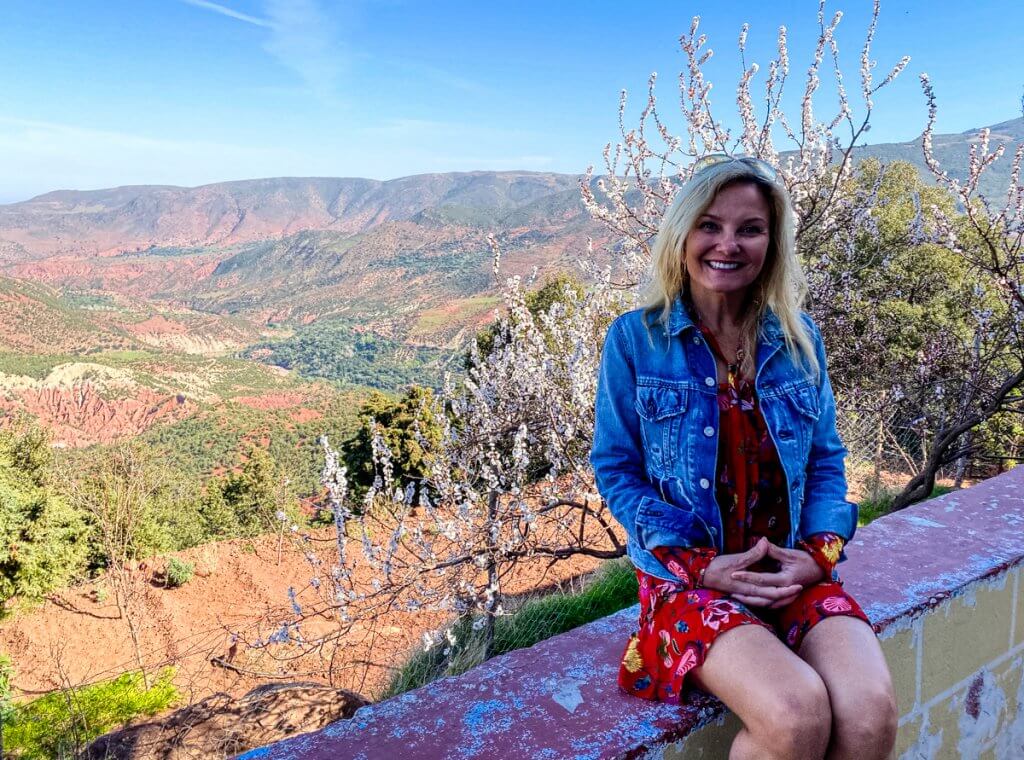
As we made our way toward Marrakesh, the valleys began to turn more green. 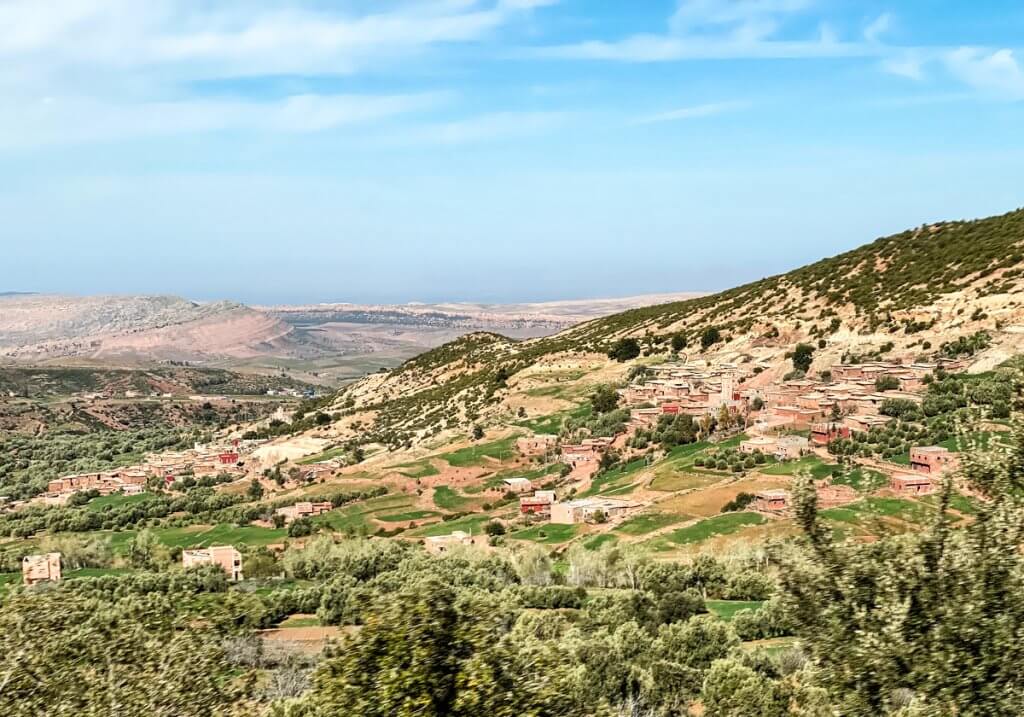
Entering the outskirts of Marrakesh.

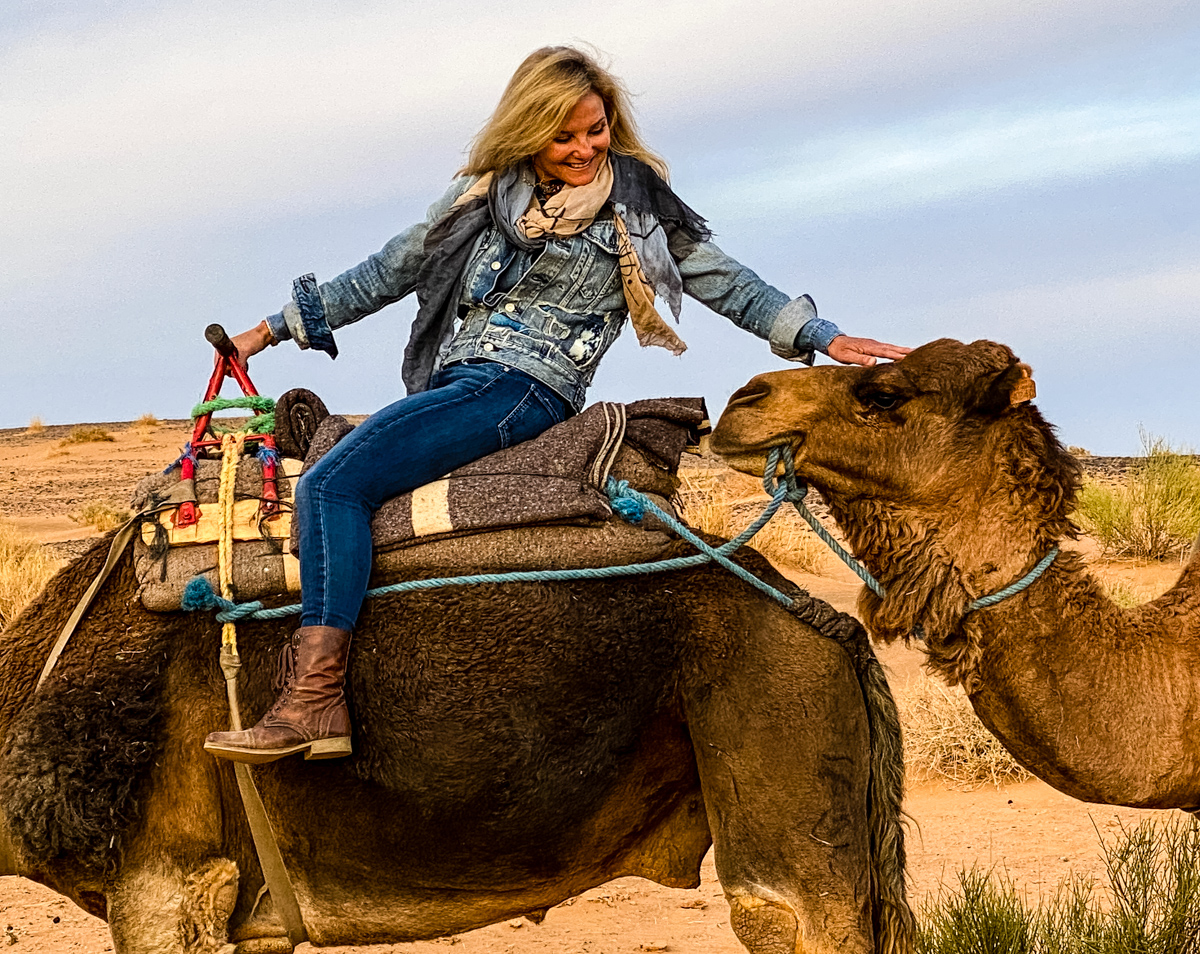
¡how wonderfully exotic Triebs! xox